This article is going to show you 20 of the most important SEO tips for beginners. And how you can use them to boost your website’s organic rankings and traffic.
We’ve used these SEO optimization tips to get our own blog to rank #1 for nearly 4,000 keywords.
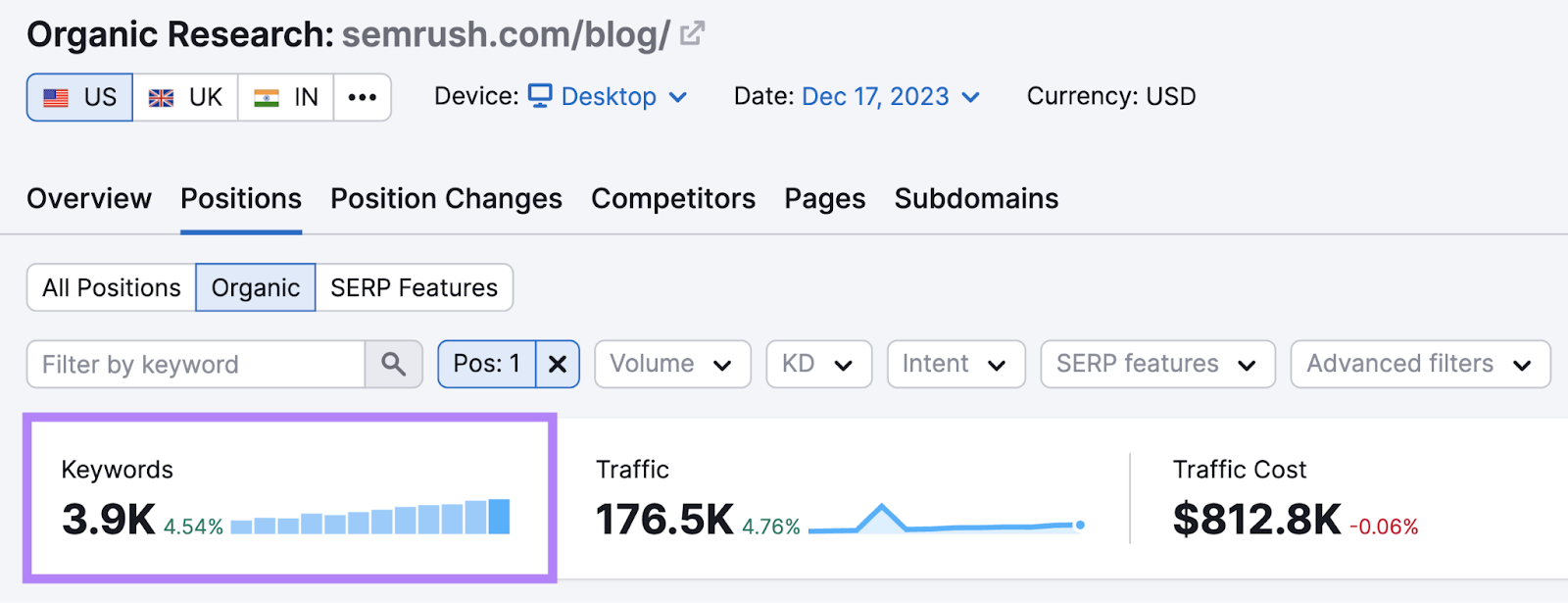
Here are the 20 most important SEO tips you need to know:
- Target Relevant Primary and Secondary Keywords
- Write High-Quality, Original Content
- Format Your Content for Readers (and Search Engines)
- Target Keywords That Trigger Featured Snippets
- Boost CTR with Compelling Title Tags and Meta Descriptions
- Use Short, Descriptive URLs
- Get Backlinks from High-Authority Websites
- Improve Your Core Web Vitals for a Better User Experience
- Use Internal and External Links Wisely
- Optimize Images, Graphics, and Other Visual Assets
- Understand Search Intent and Create Content That Matches It
- Identify Your Most Important Organic Search Competitors
- Optimize Your Website Architecture
- Leverage CTAs Throughout Your Site
- Build Topic Clusters
- Add FAQs to Articles Based on People Also Ask Questions
- Find What People in Your Niche Link to
- Uncover and Remove Zombie Pages
- Locate, Optimize, and Update Old Content
- Demonstrate E-E-A-T
1. Target Relevant Primary and Secondary Keywords
Keyword research is the foundation of any good SEO strategy.
Incorporate the right keywords effectively, and you can develop content that attracts more people to your website.
The first step is to identify your page’s primary and secondary keywords.
Primary keywords are the main terms you want to rank for. Secondary keywords are related terms that support your primary keyword and cover the topic more in depth.
The best way to find both is with a keyword research tool. Like the Keyword Magic Tool.
Let’s say your company sells a product for lifecycle marketing. And you want to create content to attract customers.
To find out which specific keywords you should include in your content, enter “lifecycle marketing” into the tool, select your location, and click “Search.”
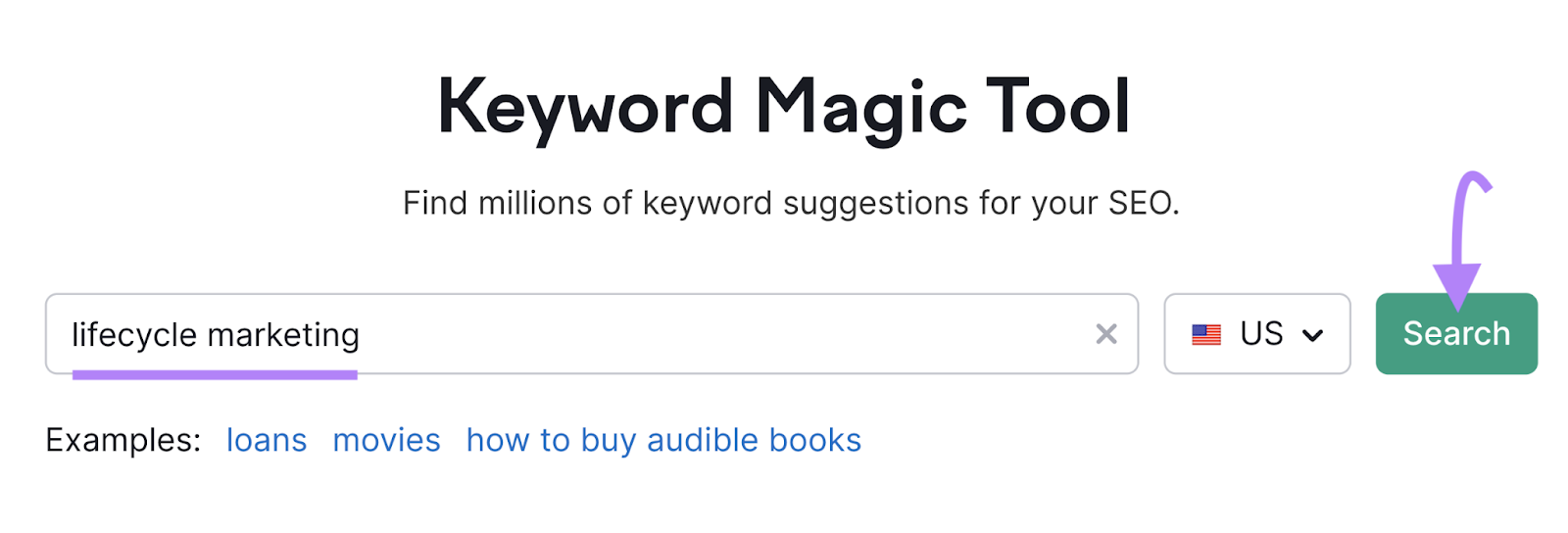
You’ll get a list with suggested keywords based on the main keyword you entered.
Like this:
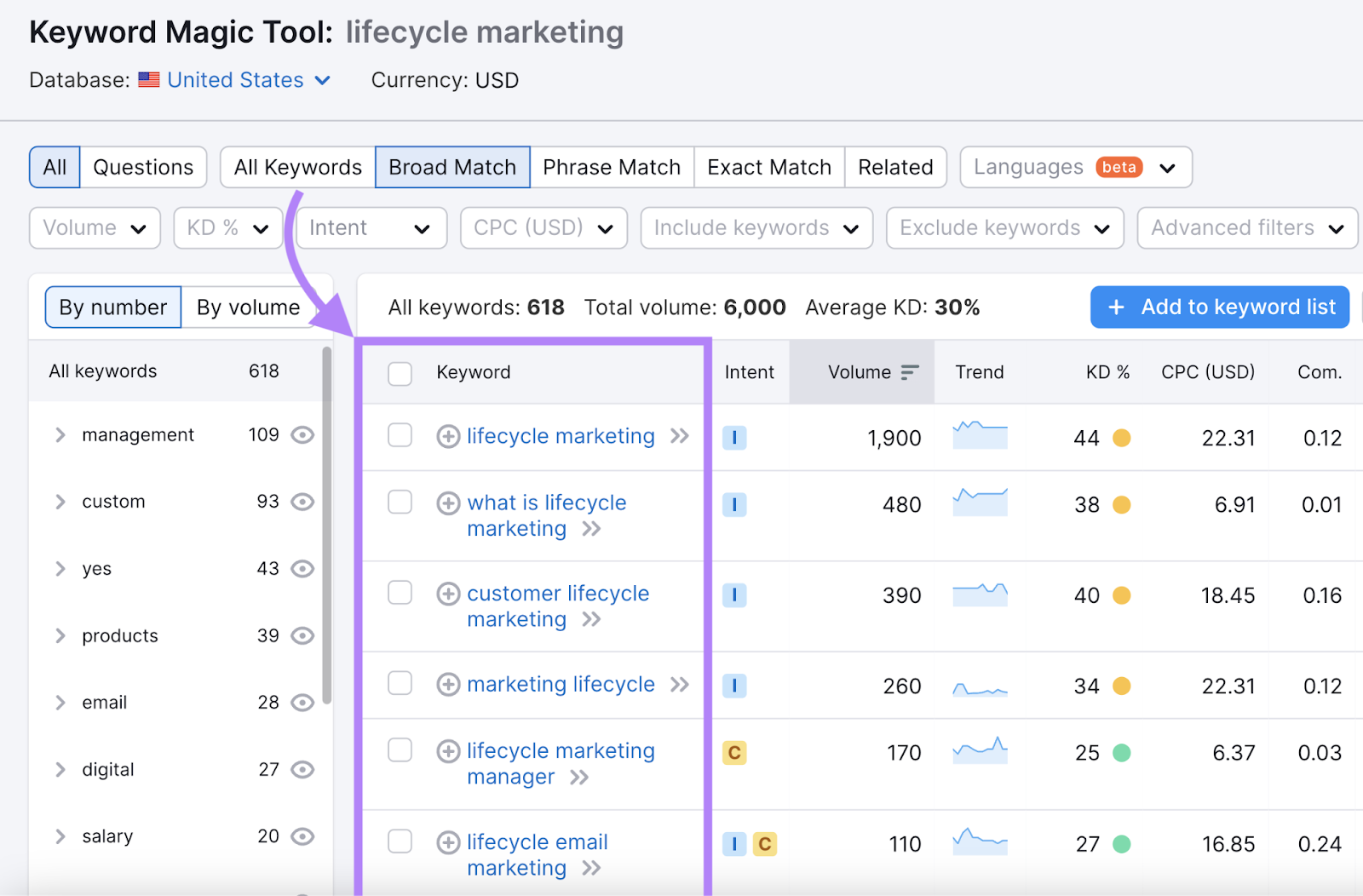
Your primary keyword will be one that’s particularly relevant to your business or the topic you want to cover. And often (but not always) has one of the highest search volumes in the list.
In this case, “lifecycle marketing.”
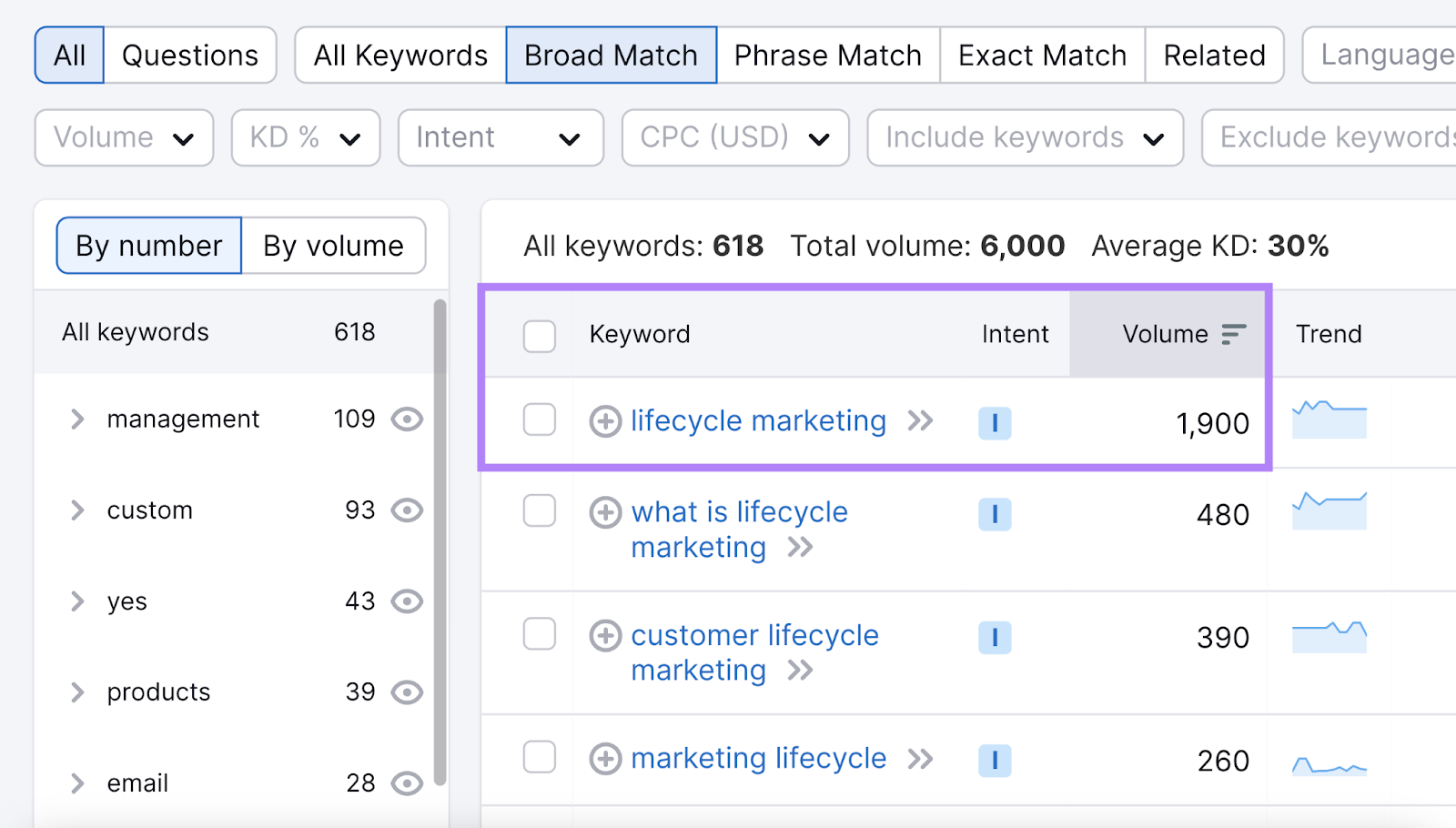
Your secondary keywords are those that are closely related to (and within the same context as) your primary keyword.
To find them, add your primary keyword to the Keyword Magic Tool, and click “Search” again.
Then, click the “Related” match modifier.
These are all secondary keywords—similar to your primary keyword and with similar search engine results.
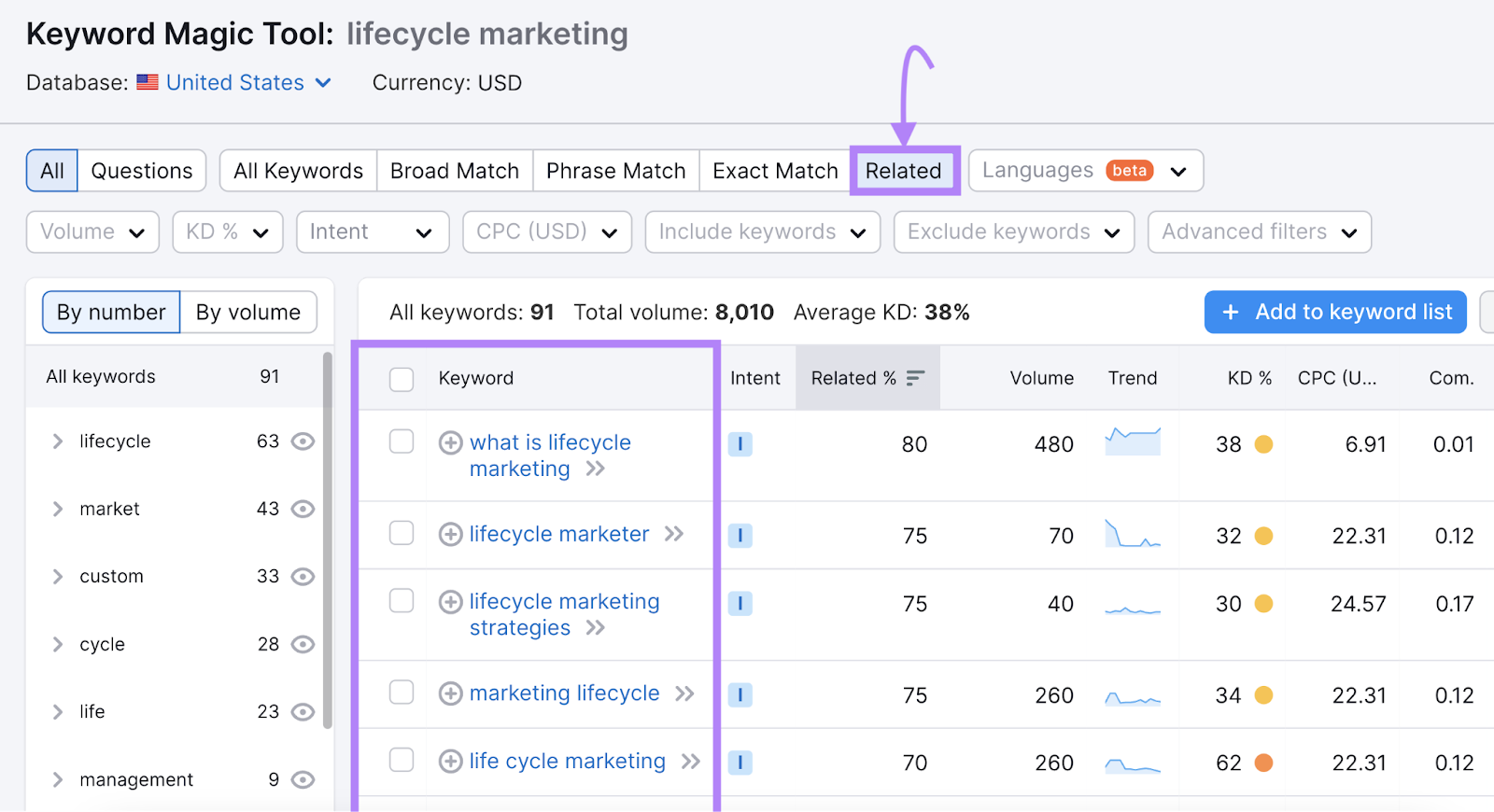
You can also click on the “Questions” button to see question-based keywords that contain your primary keyword.

Make sure each piece of content targets one primary keyword and multiple secondary keywords. To help you rank well for a large number of keywords.
Further reading:
2. Write High-Quality, Original Content
Without high-quality, original content, your SEO efforts will go to waste.
But what exactly makes content high-quality and original?
High-quality content is content that provides value to your audience. It answers their questions, solves their problems, and satisfies their needs.
It’s not just keywords stuffed into a page. It’s well-researched, well-written, and well-formatted.
Original content is content that is unique to your website.
It’s not copied, spun, or scraped from other sources. It’s content that you create yourself or with the help of someone you hire to create it for you. And it adds something new to the web.
A great way to ensure your content meets both criteria is to use Semrush’s SEO Writing Assistant.
The tool can help you quickly run an SEO content analysis, improve readability, check for originality, and more.
To start, add your text into the tool by typing into it directly, copying and pasting, or importing it from the web with a URL.
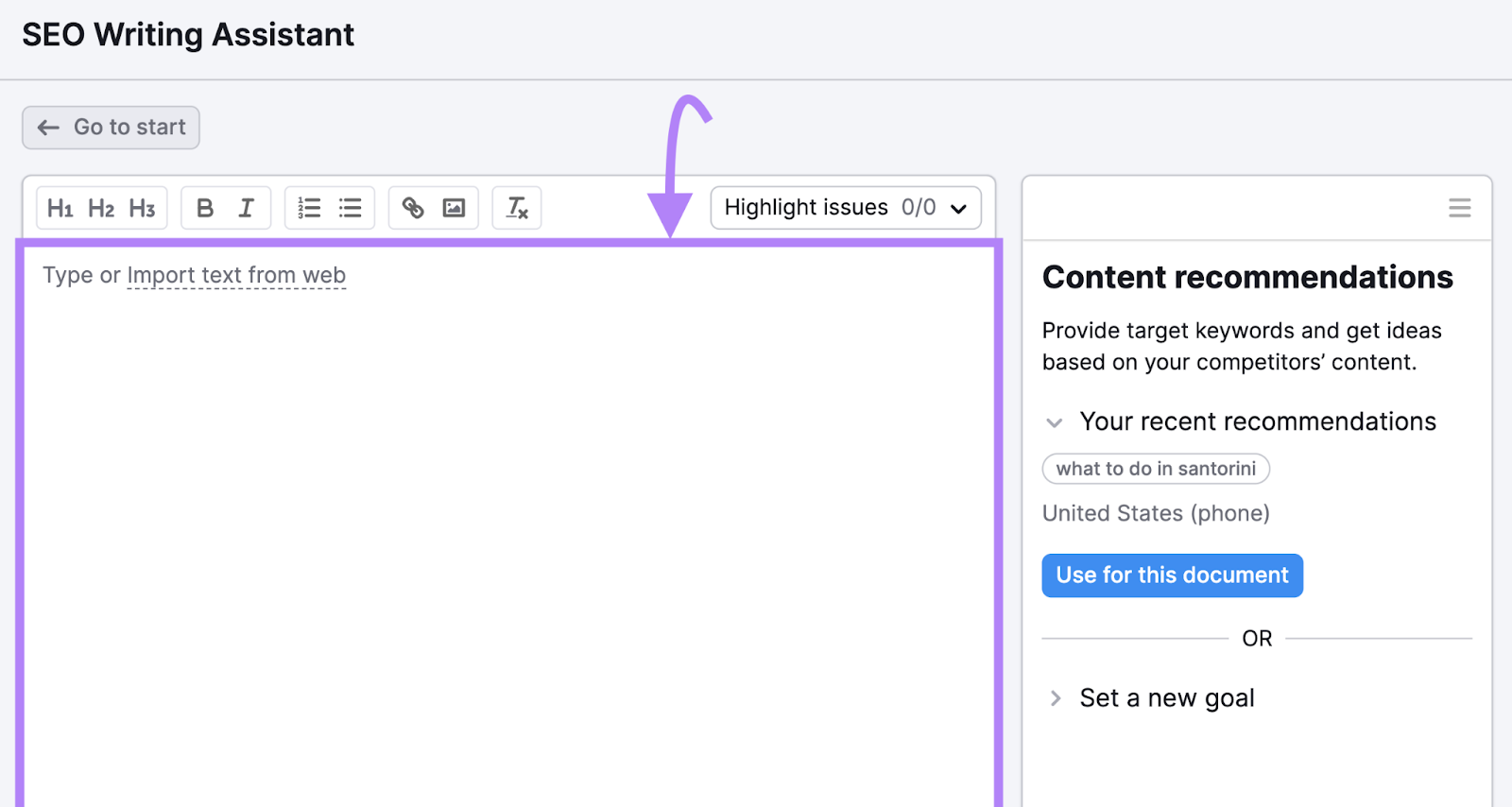
Then, add the keywords you want to target in the area to the right, choose your location and device, and click “Get recommendations.”
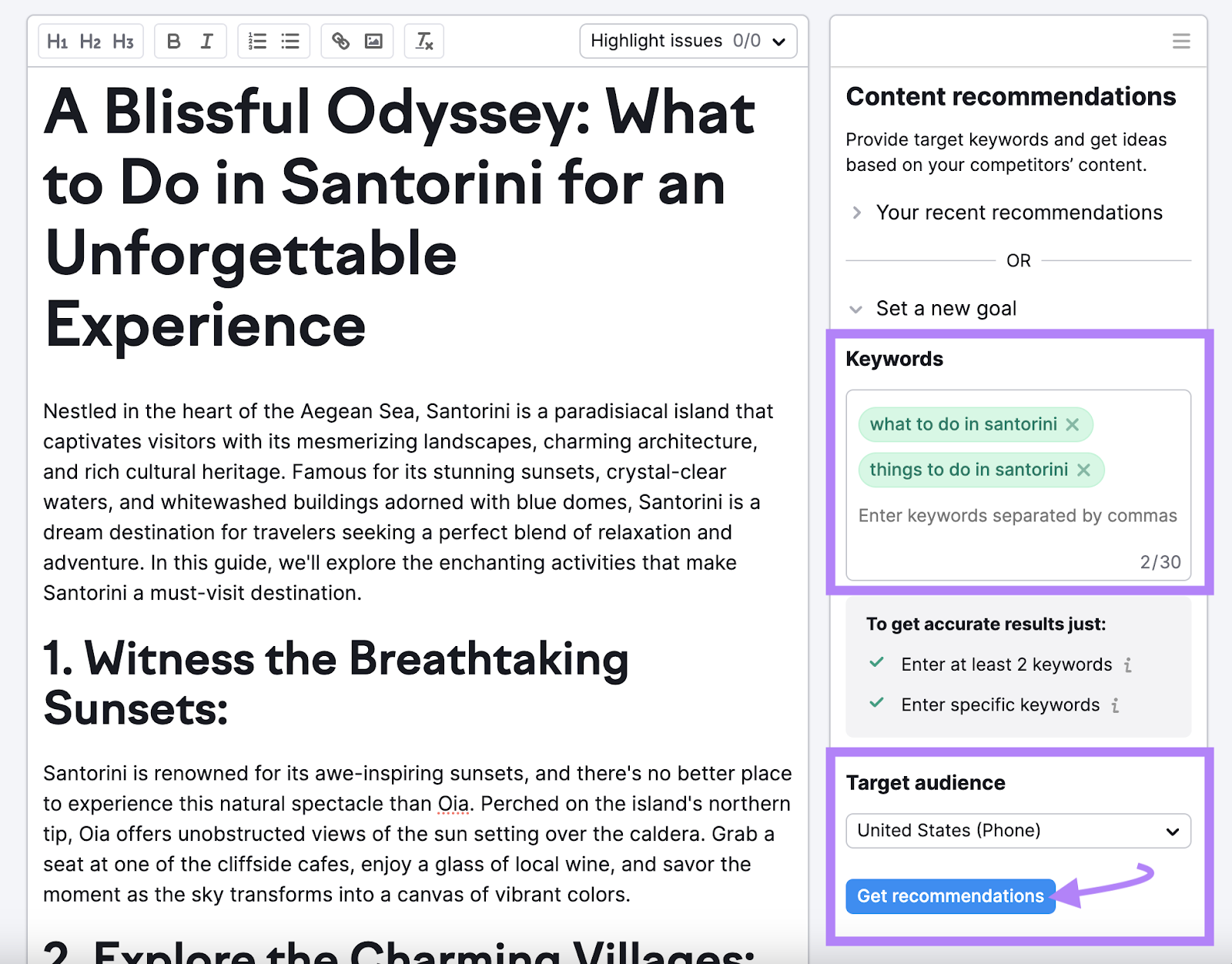
The tool will show a score graph—broken down into four different categories: readability, SEO, originality, and tone of voice.
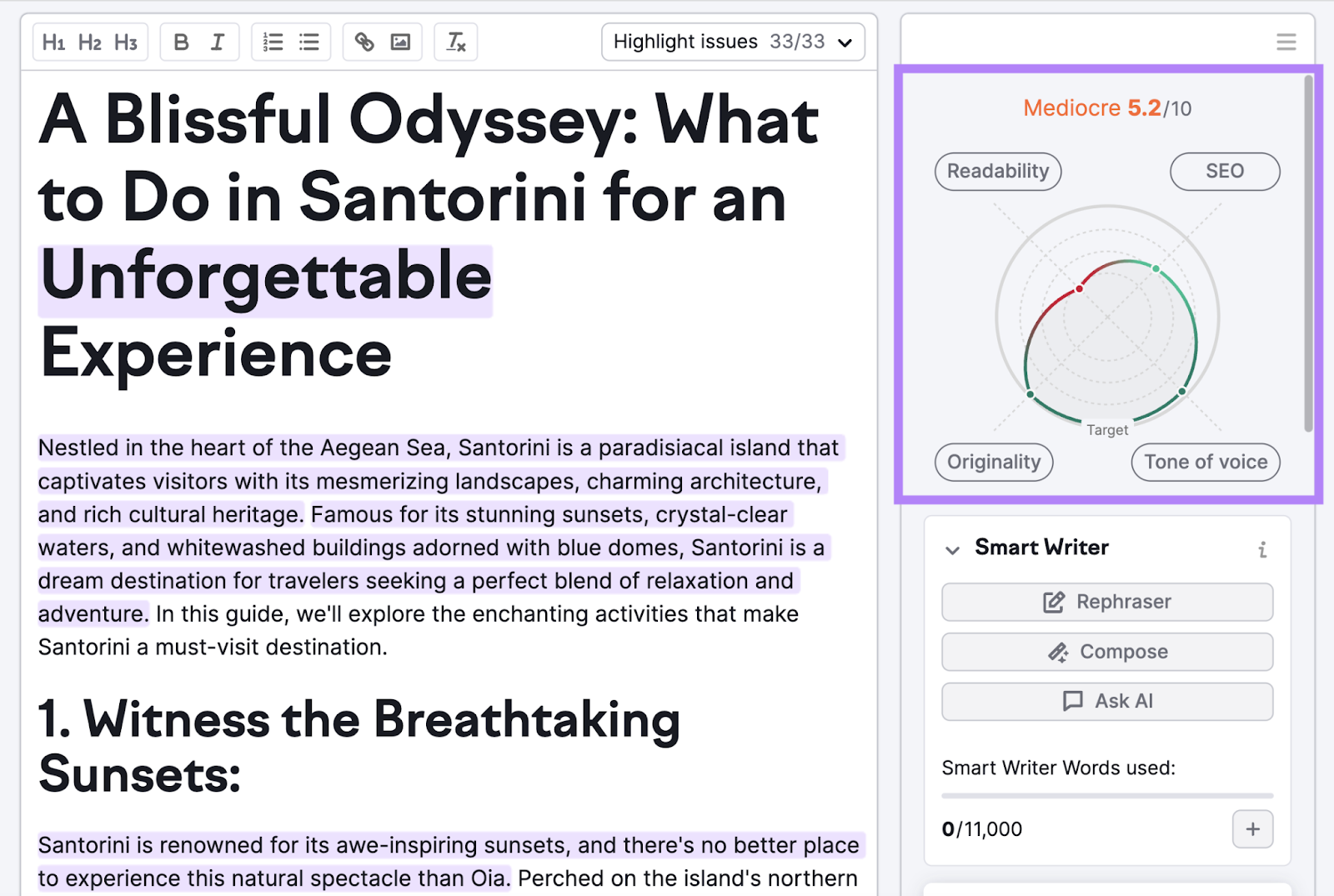
If you click on a category, you’ll see the metrics that make up the score. And get recommendations on how to improve it.
Like this:
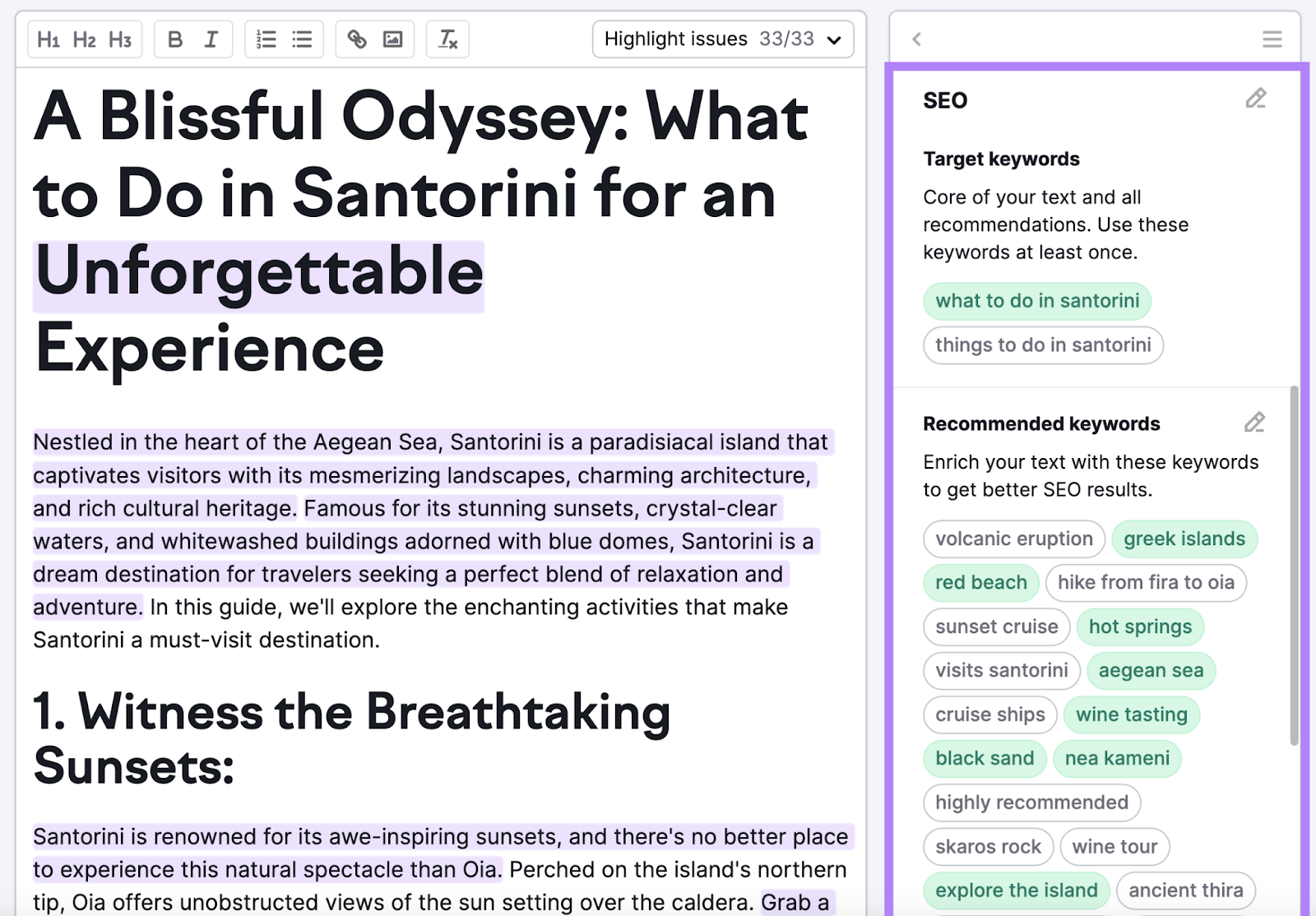
The tool also has handy add-ons for Google Docs, WordPress, and Microsoft Word.
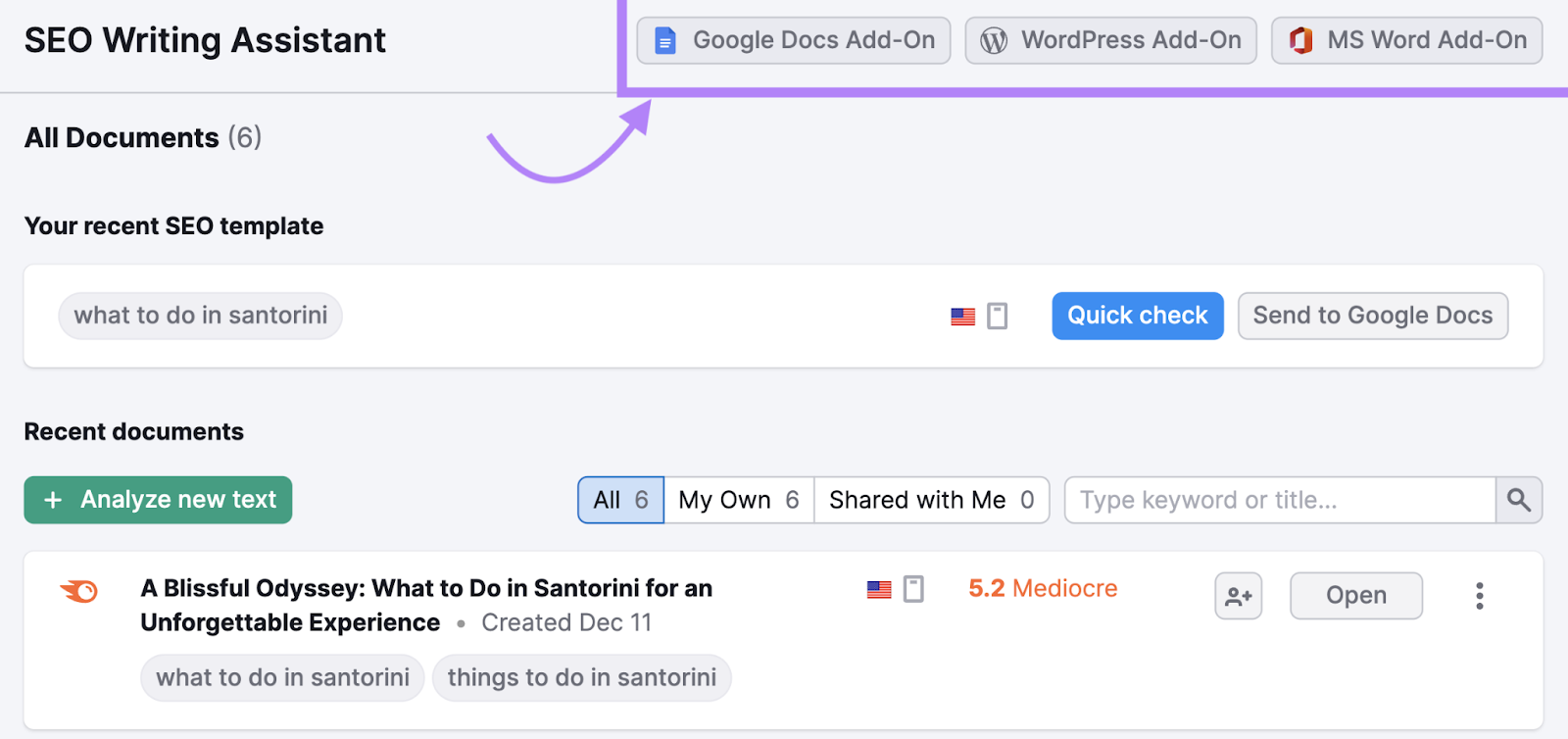
Further reading: What Is Quality Content & How to Create It
3. Format Your Content for Readers (and Search Engines)
The way you format your content can make or break your SEO efforts.
Why?
Because formatting affects two key factors: readability and the user experience.
Readability is how easy it is for people to understand your content.
User experience (UX) is how people feel when they interact with your content.
Both of these factors influence how long people stay on your page, how they engage with your content, and whether they share it with others.
And guess what?
Search engines care about these factors, too.
Signals like bounce rate, dwell time, and social shares are not direct Google ranking factors. But they do tell you something about how useful and relevant your content is for your audience.
And search engines want to rank useful and relevant content.
So, the more you optimize your content for readability and the user experience, the better it is likely to be for search engines.
Here are some SEO recommendations to follow:
- Use plenty of headings and subheadings to help readers scan your content and find what they’re looking for
- Write short paragraphs and sentences to make your content more digestible and engaging
- Use bullet points and numbered lists to highlight key points to draw attention and make content scannable
- Use images, videos, charts, and other visual elements to communicate ideas efficiently
- Use white space to create breathing room for your content and help reduce visual clutter and improve readability
4. Target Keywords That Trigger Featured Snippets
Featured snippets are small text excerpts that appear at the top of Google’s search results and provide a short, quick answer to the searcher’s query.
And winning a featured snippet is a great way to get more visibility, clicks, and traffic. Your page will rank at the very top—even above the first organic result (also known as “position zero”).
Like this:
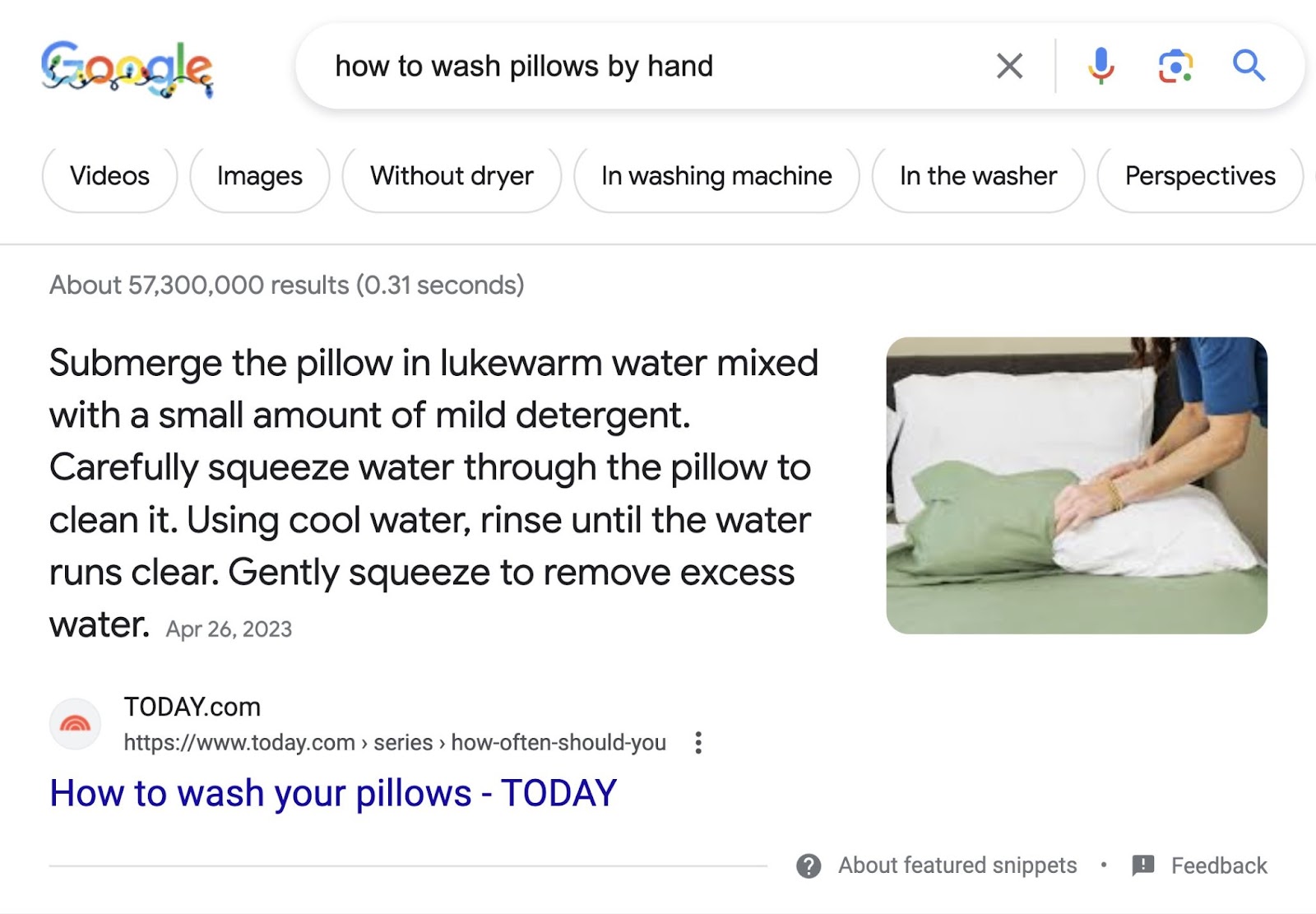
Here’s a quick way to find featured snippet opportunities:
Open the Organic Research tool, enter your domain, and click “Search.”
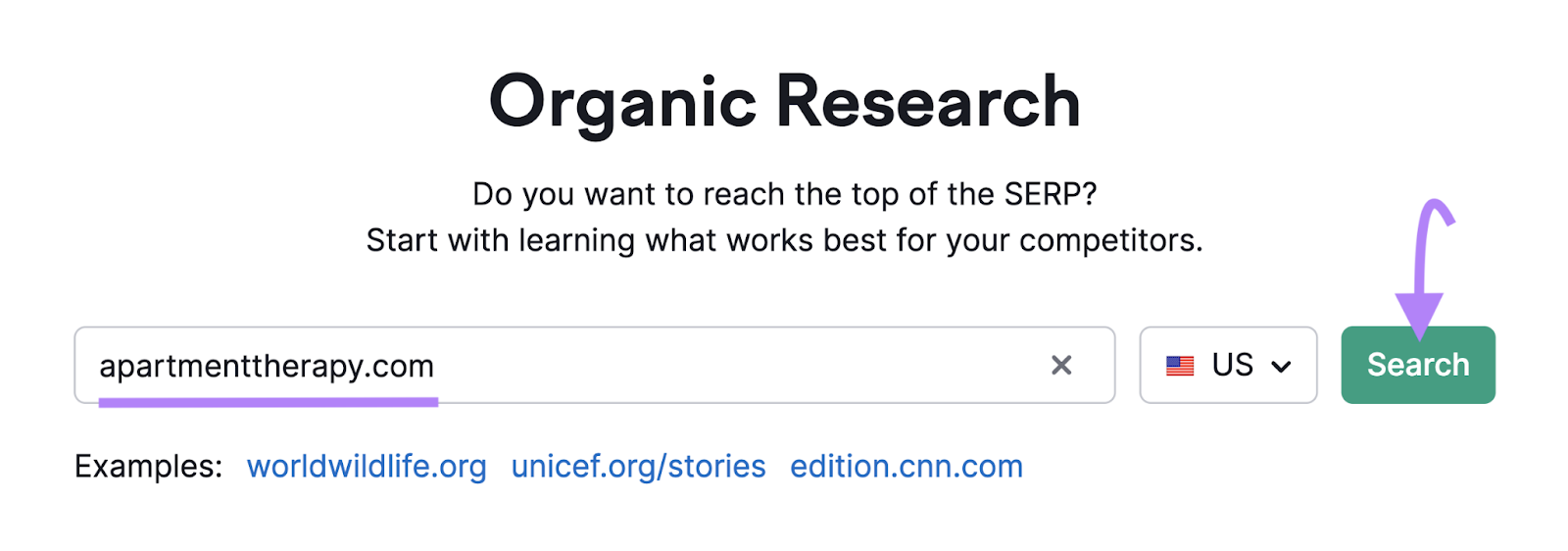
Then, head to the “Positions” tab.
Click the “SERP features” drop-down menu. Then select “Domain doesn’t rank” and click “Featured snippet.”
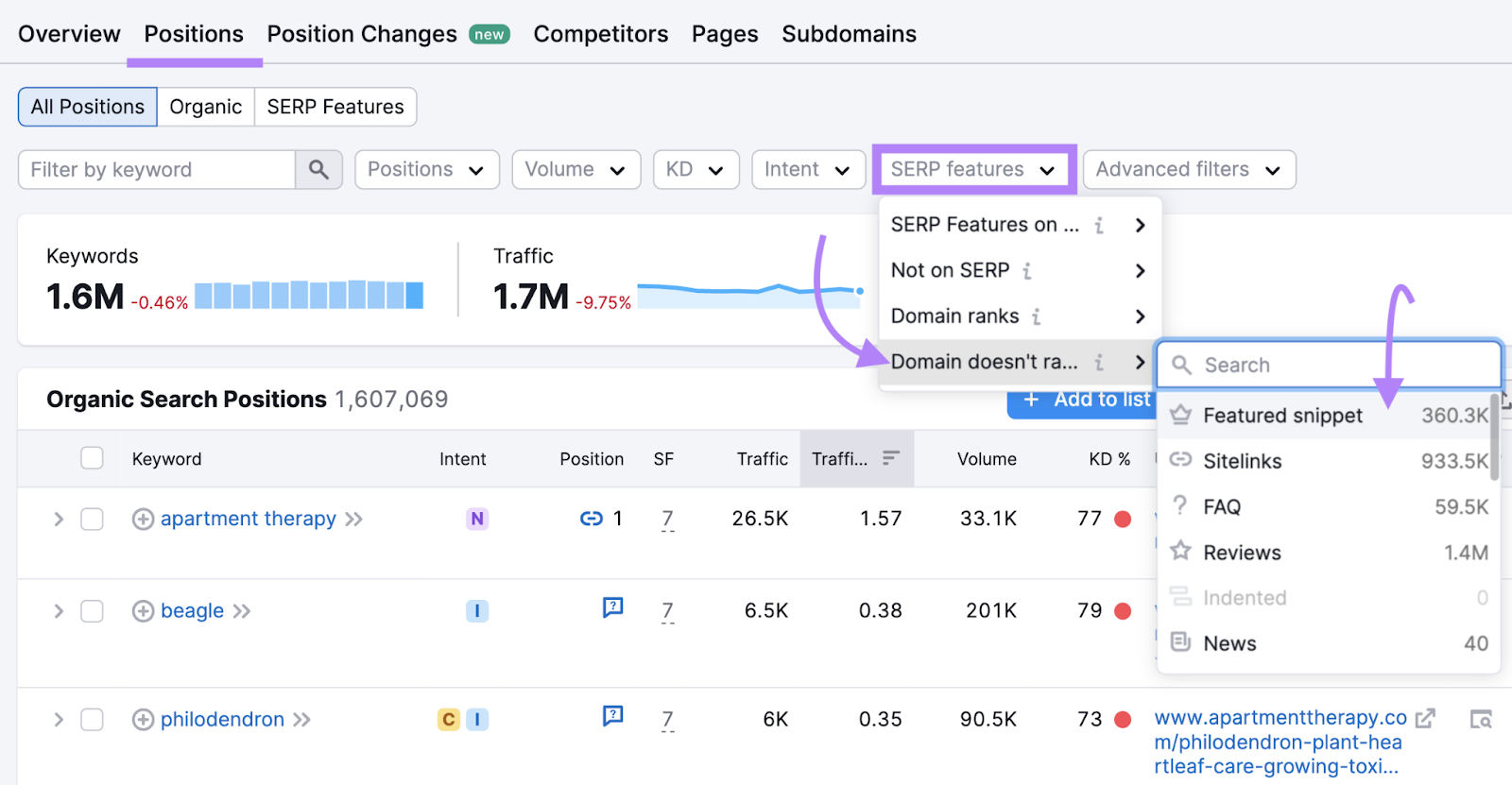
These are all the keywords you rank for that trigger featured snippets you don’t have. Yet.
To try to secure those snippets, you can:
- Structure your content with organized headers
- Use relevant questions as headers and answer the question directly
- Format your paragraphs with lists and tables where needed
Further reading:
A title tag sets the title of a webpage and appears in browser tabs and search results.
A meta description provides a brief summary of a webpage and may be used by search engines to create a snippet (the descriptive text in a search result).
This is what a title tag and a meta description might look like in Google:
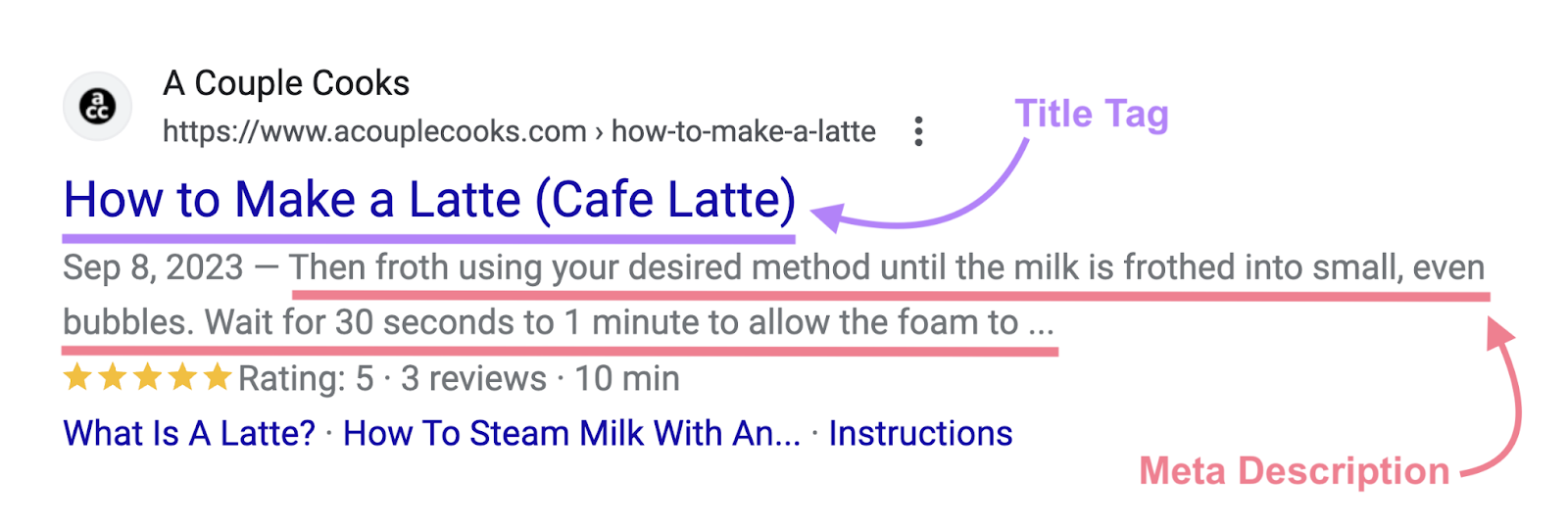
And both elements can play a big role in how likely a searcher is to click on your result.
They help searchers understand what your page is about. And convince them to click through. Which is measured by your click-through rate (CTR).
Here are a few best practices to follow when writing title tags and meta descriptions:
- Use your target keyword in both elements
- Make your title tag a question, list, or how-to guide
- Write meta descriptions that summarize the page’s main benefit
- Test and optimize your title tags and meta descriptions
Further reading: How to Understand, Measure, and Improve Your Organic CTR
6. Use Short, Descriptive URLs
One of the easiest SEO tips you can implement is to use short, descriptive URLs for your webpages.
A URL is the address of a webpage that appears in a browser. It can tell search engines what the page is about.

And using short, descriptive URLs can also improve user experience—which may further boost your SEO.
Here are four best practices you should follow:
- Use hyphens (-) to separate words—not underscores (_), spaces, or other characters
- Use lowercase letters—not uppercase letters
- Avoid using unnecessary words, such as articles, conjunctions, prepositions, or stop words
- Include your target keyword, but don’t overdo it
For example, compare these two URLs for an article about SEO tools:
https://www.example.com/blog/seo-tools
https://www.example.com/blog/the-ultimate-list-of-the-best-seo-tools-2023
The first URL is short and descriptive, and it includes the target keyword. The second URL is long and complex, and it includes unnecessary words.
Which one is better for SEO and user experience?
The first one.
Further reading: What Is a URL? Meaning, Structure, and Optimization Tips
7. Get Backlinks from High-Authority Websites
Backlinks are links from other websites that point to yours. And they’re an important Google ranking factor.
But not all backlinks are equal.
Some carry more weight and authority than others. Depending on the source.
For example, a backlink from a well-known and reputable site like Wikipedia or Forbes will have more impact on your SEO than a backlink from a random blog or forum.
That’s why you should try to get backlinks from websites with a high site Authority Score—a Semrush metric that measures a site’s trustworthiness and authority.
Here’s how:
Enter your domain into the Link Building Tool.
You’ll get a list of prospects based on your competitors and target keywords—conveniently sorted by Rating (which measures how much value a link from that source provides) and Authority Score.
Like this:
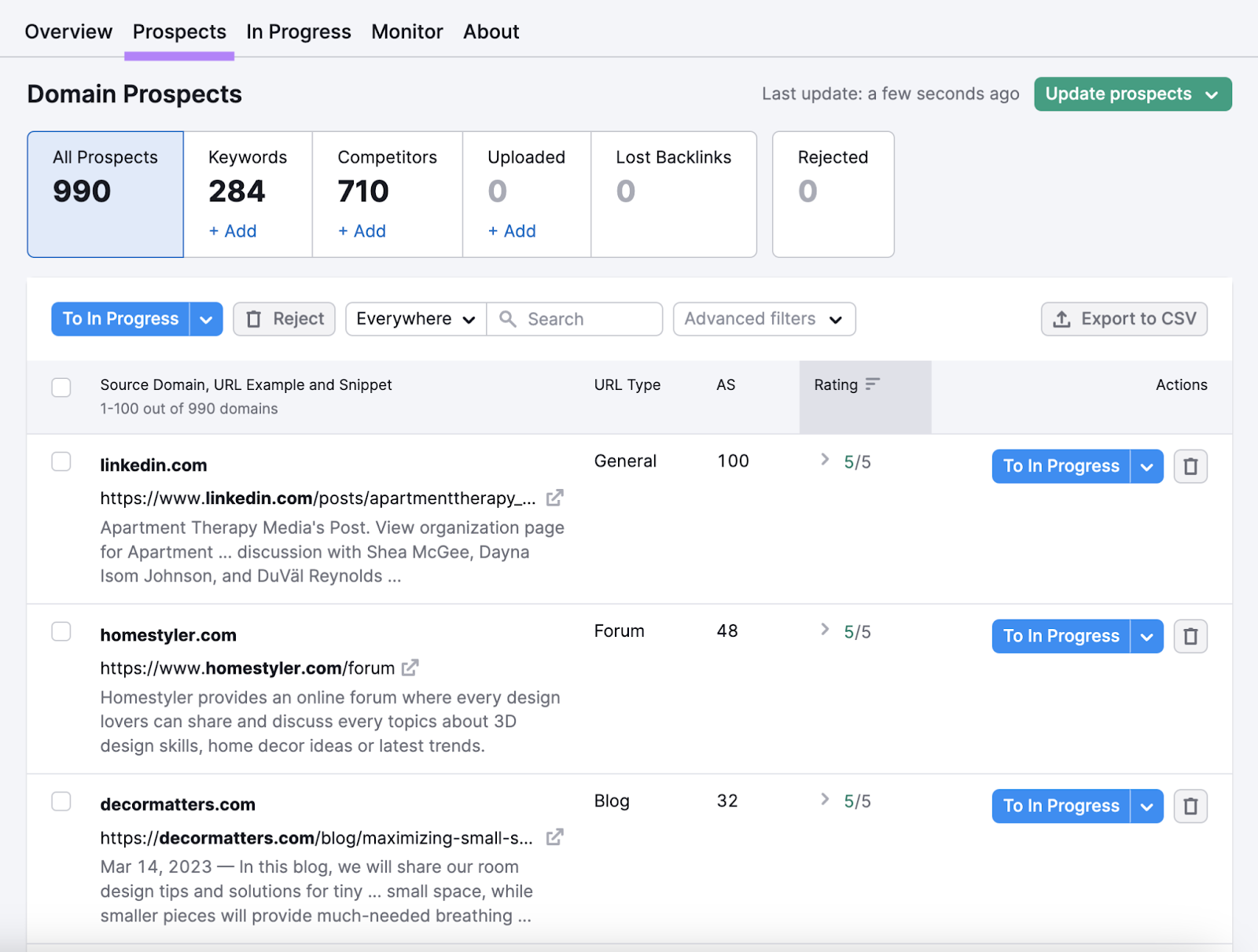
Further reading: Link Building for SEO: The Beginner’s Guide
8. Improve Your Core Web Vitals for a Better User Experience
Core Web Vitals are a set of metrics that measure how fast, responsive, and stable your webpages are.
These metrics are:
- Largest Contentful Paint (LCP): How long it takes for your page’s main content to load
- First Input Delay (FID): How long it takes until your page can respond to the user’s first interaction (such as a click)
- Cumulative Layout Shift (CLS): How much users experience shifts in layout
And they’re critical for SEO.
Google has confirmed that Core Web Vitals are a part of the page experience that affects rankings.
Which means:
If your pages have poor Core Web Vitals scores, you could lose traffic to competitors who offer a better user experience.
To audit your site’s Core Web Vitals, check the Core Web Vitals report in Google Search Console or the “Core Web Vitals” report in Site Audit.
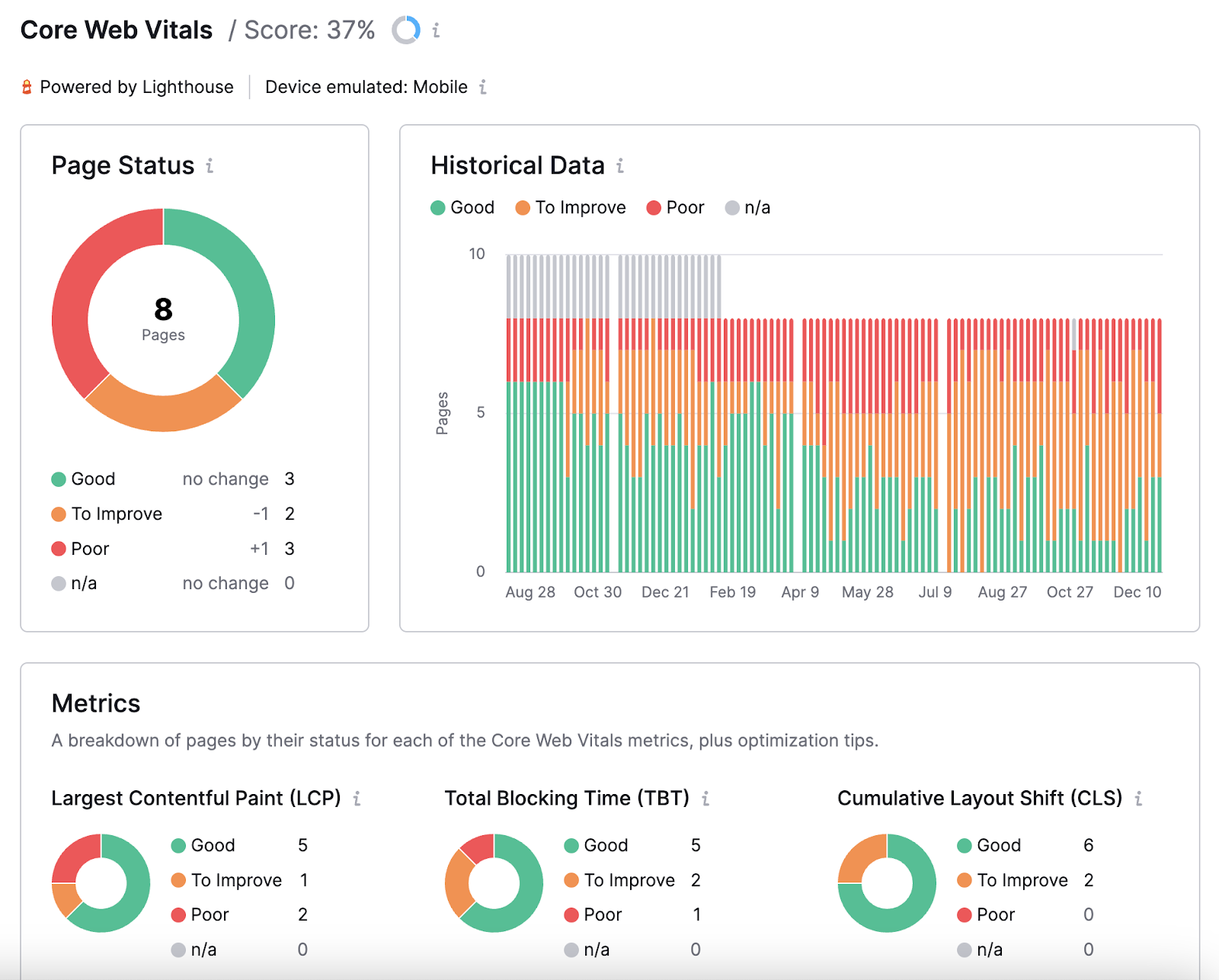
Further reading: Core Web Vitals: A Guide to Improving Page Speed
9. Use Internal and External Links Wisely
This is one of the easiest and most powerful SEO tips. Strategically incorporating internal and external links can make a huge difference in your SEO.
Internal links are links that point to other pages on your site.
They help you:
- Create a clear and logical site structure that Google and users ****
- Boost the authority and relevance of your pages with “link juice” (ranking power)
- Increase user engagement and retention by providing more value and information
External links, on the other hand, are links on your site that point to other sites.
They help you:
- Build credibility and trust by referencing other authoritative sources
- Give readers additional value and context by directing them to related resources
- Build relationships and reputation by showing other sites your appreciation and recognition
But you shouldn’t just throw links around and hope for the best.
Follow these best practices to use internal and external links effectively:
- Use descriptive and relevant anchor text (the clickable, linked text) that tells readers and Google what the linked page is about and how it relates to your content
- Link to high-quality, relevant pages—both internally and externally—that provide more value and information to your readers
- Avoid using too many links or the same links over and over—both internally and externally—as this can make your content look unnatural and manipulative
Further reading:
10. Optimize Images, Graphics, and Other Visual Assets
Images and other visuals can make your content stand out. And help your SEO if you optimize them correctly.
Here’s what you can do:
- Use high-quality images that are relevant to your topic and audience
- Rename image files to include your target keyword or phrase—it can help Google understand what your image is about and display it in results accordingly
- Add alt text (the short text that describes an image) to describe images clearly and concisely
- Add image captions to provide extra information or context
- Reduce the image file size to boost page speed and improve the user experience
- Choose the appropriate file format for your images based on quality and purpose
- Add images to your sitemap (a file that lists your pages and how they’re related) to help Google find and index them faster
- Use responsive images to ensure they look great on different devices and screen sizes
- Use lazy loading to delay the loading of images that aren’t in the user’s view
- Use schema markup for products and recipes, where applicable, to try to snag rich results like product carousels and recipe cards
Implement these search engine optimization tips, and you can enhance user engagement and improve your site’s performance.
Further reading: Image SEO and Alt Tags: 10 Image Optimization Tips
11. Understand Search Intent and Create Content That Matches It
Search intent is the goal or purpose behind a user’s search.
It tells you what they’re looking for and why—whether it’s to find an answer, learn something, buy a product, or explore a topic.
And understanding and satisfying intent is critical for SEO. Because Google prioritizes relevance in search results.
If your content doesn’t match the user’s intent, you likely won’t rank well. Regardless of how good your content is.
There are four main types of search intent:
- Informational: The user wants to learn something or find an answer to a question (e.g., “how to bake a cake” or “who is the president of france”)
- Navigational: The user wants to visit a specific site or page (e.g., “facebook login” or “semrush blog”)
- Transactional: The user wants to buy something or perform an action (e.g., “buy iphone 12” or “book flight to paris”)
- Commercial: The user wants to compare products or services before making a purchase decision (e.g., “best gaming laptop” or “iphone 14 vs samsung s23”)
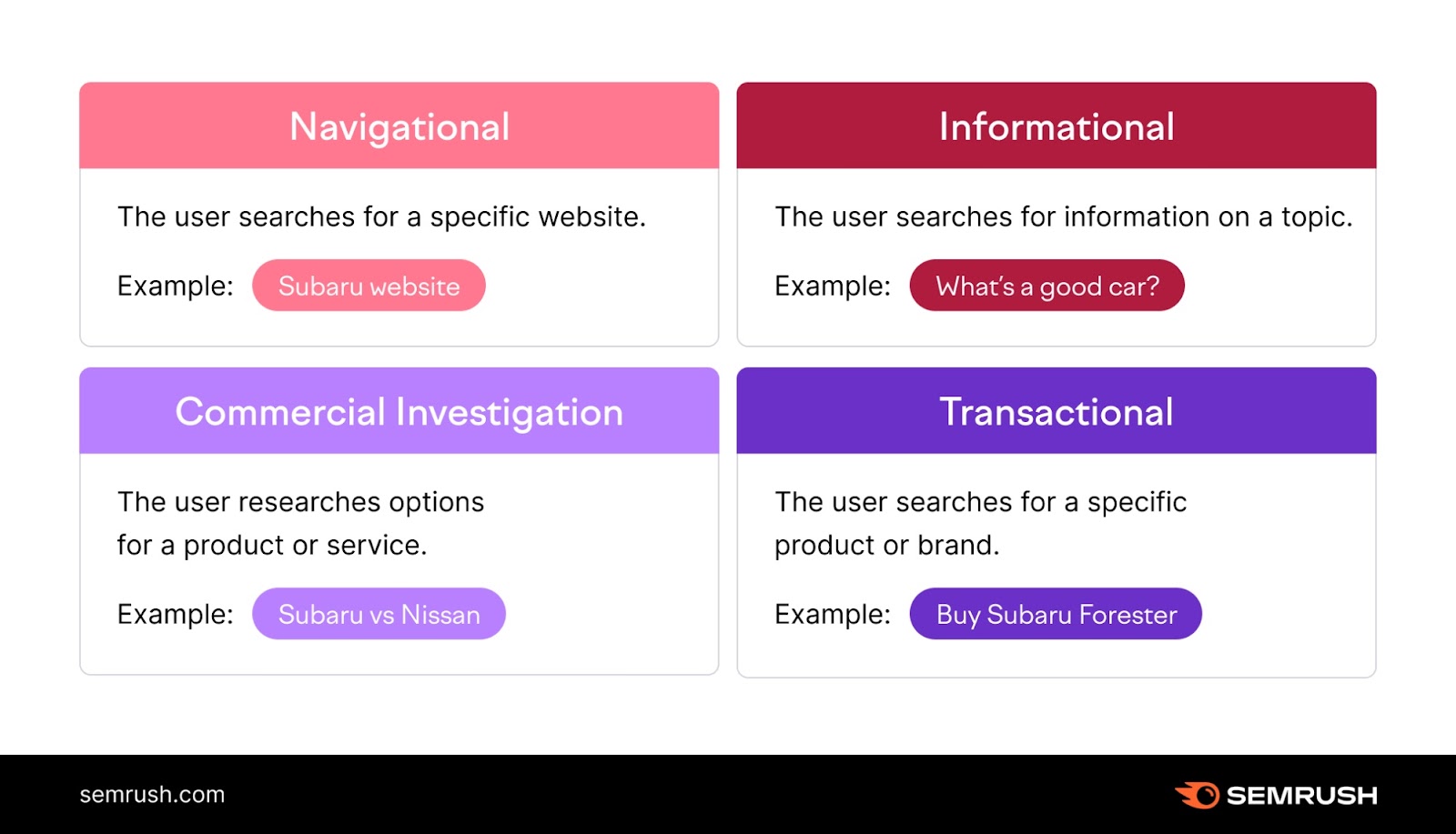
You can find a keyword’s search intent with Keyword Overview. Just look for the “Intent” widget.
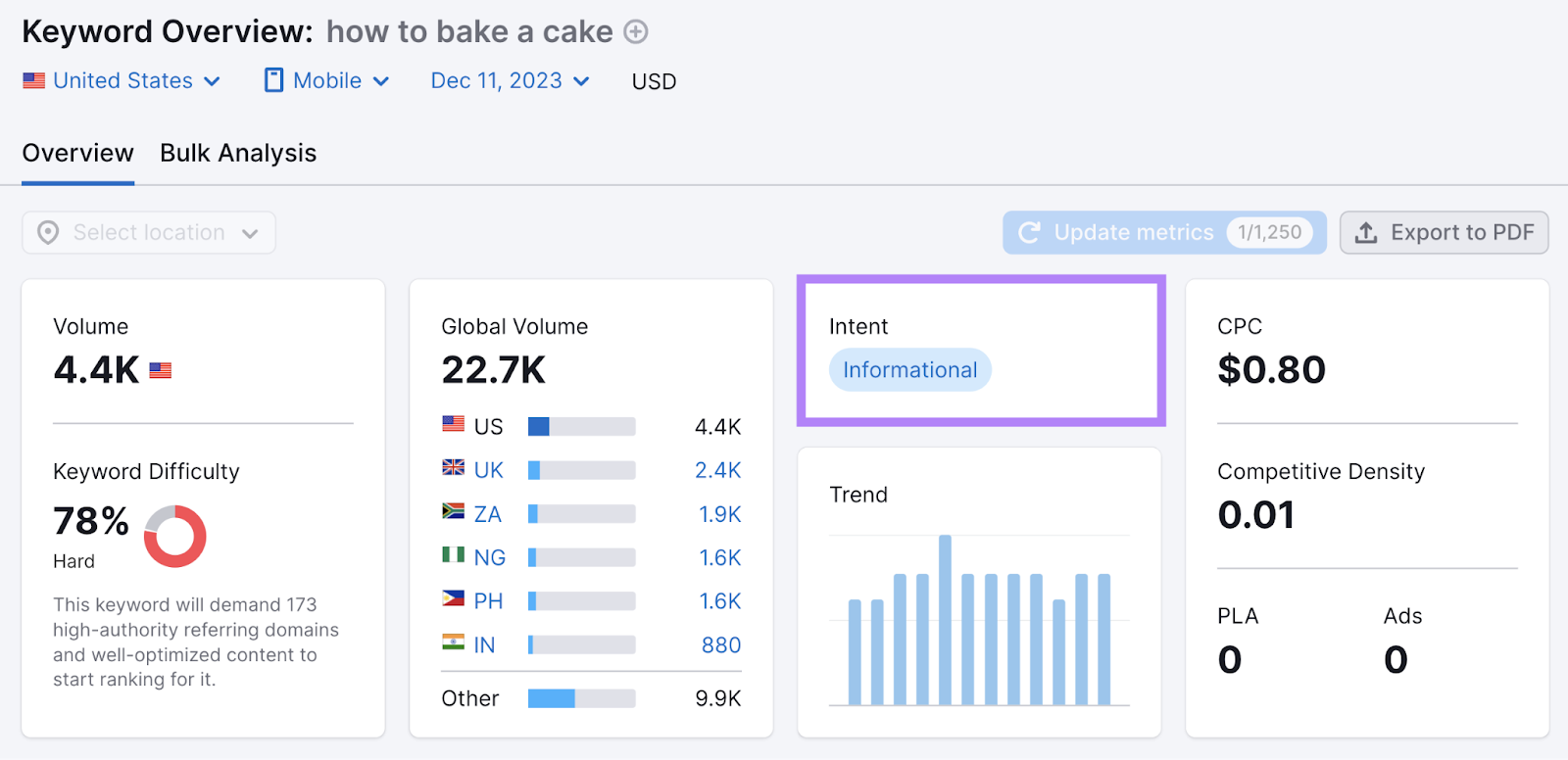
If you’re doing keyword research, the Keyword Magic Tool also shows every keyword’s intent in the “Intent” column.
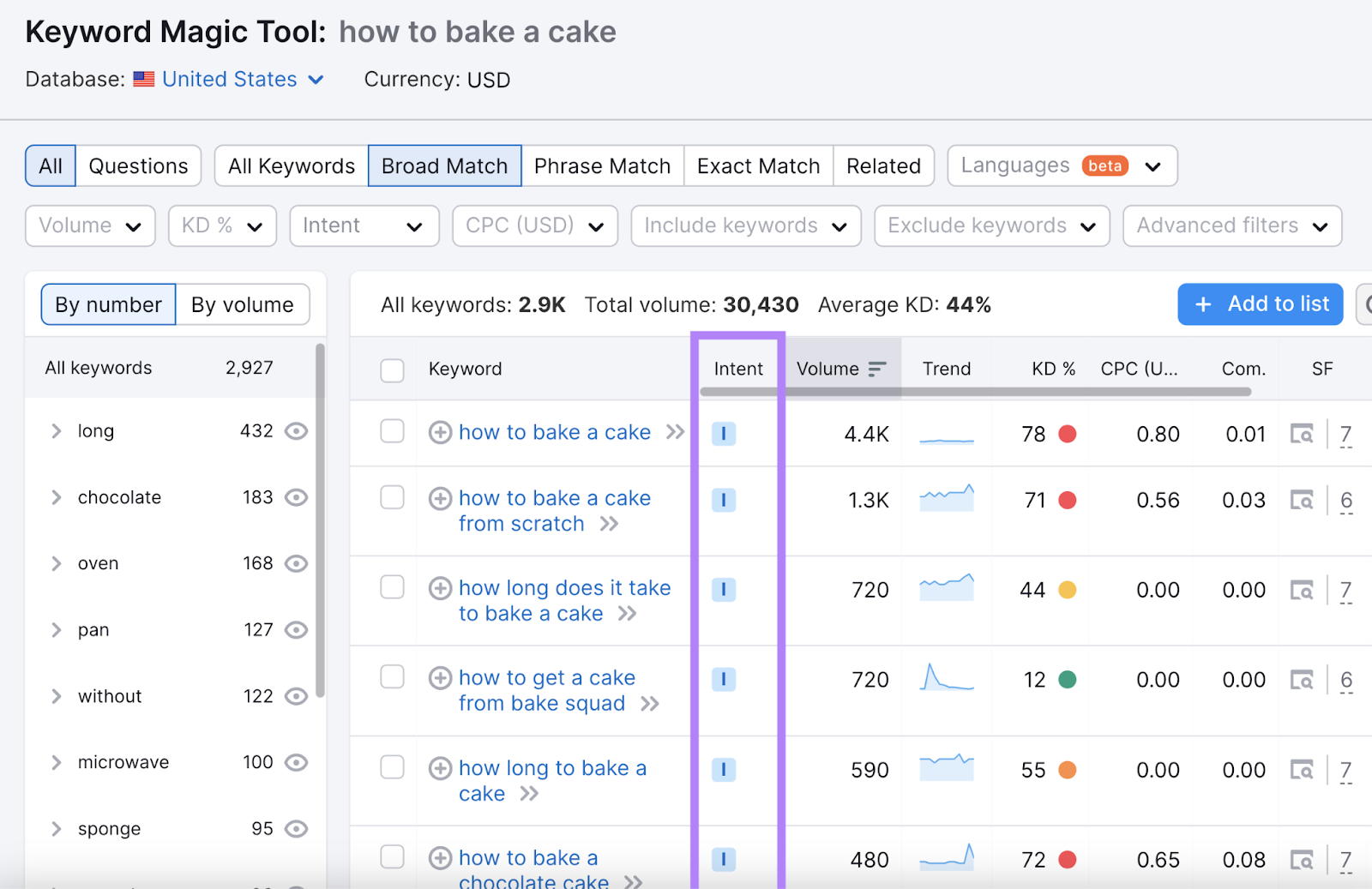
Here are some best practices to help you satisfy search intent:
- Analyze the top-ranking pages for your target keyword and identify the content type, format, and angle they use
- Create high-quality, relevant, and engaging content that answers the user’s query and provides additional value beyond what the current results provide
- Optimize your page for your primary and secondary keywords by using them strategically throughout the content, metadata (like your title tag and meta description), headlines, and URL
- Analyze the user’s secondary intent and long-tail keywords to create content that covers related topics and subtopics
Further reading: What Is Search Intent? A Complete Guide
12. Identify Your Most Important Organic Search Competitors
Before you can outrank your competitors, you need to know who they are.
And when you find them, you can analyze their strengths, weaknesses, and strategies. Which can help you make informed decisions to boost your rankings.
You can quickly find your organic competitors with Organic Research.
Just enter your domain and click “Search.”
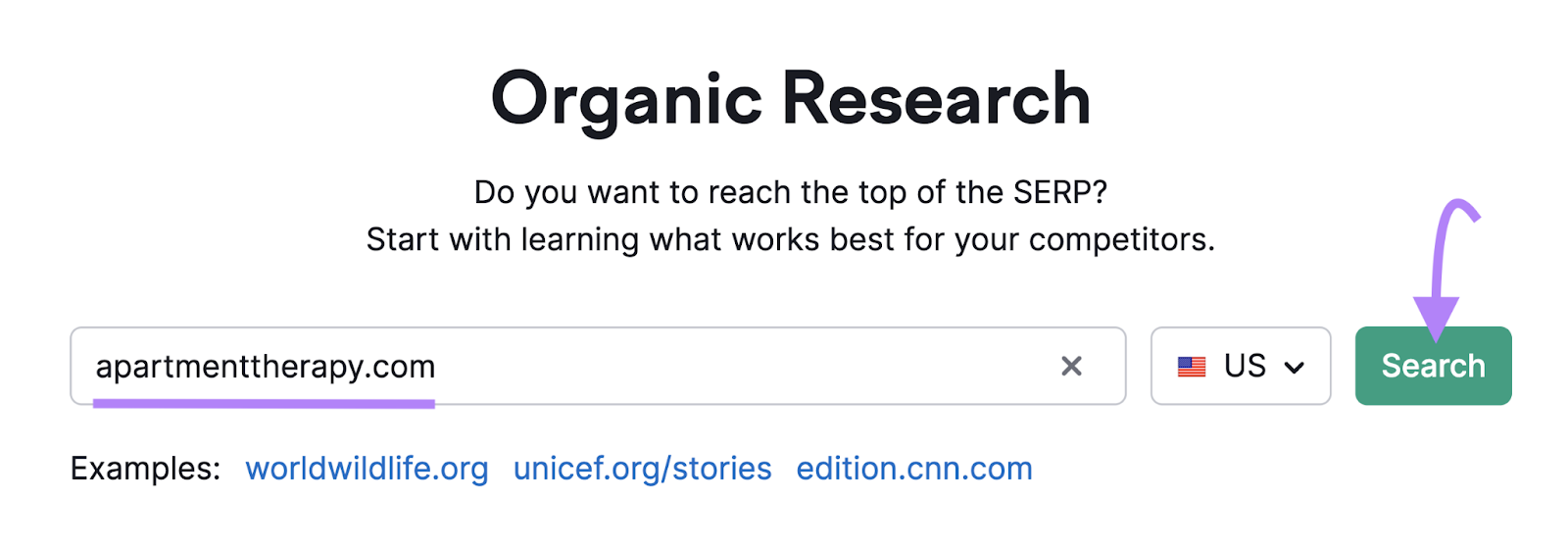
Then, head to the “Competitors” tab and you’ll see a table with your organic competitors—sorted by Competition Level.
This metric measures the number of keywords your competitor ranks for and the number of keywords you share.

Now, you know who your top organic search competitors are. So, take a look at the content they create, keywords they rank for, backlinks they have, and more.
Build on their strengths. And capitalize on their weaknesses.
Further reading: How to Do an SEO Competitor Analysis
13. Optimize Your Website Architecture
Website architecture is how your site’s pages are structured, interlinked, and designed. A good website architecture is key for user experience and SEO.
Why?
Here are three of the most important reasons:
- It helps search engines find (and index) your site’s pages
- It helps distribute link authority throughout your site via internal links
- It helps improve UX and engagement by allowing visitors to find what they’re looking for
To quickly audit your site’s structure, head to the “Internal Linking” report in Site Audit.
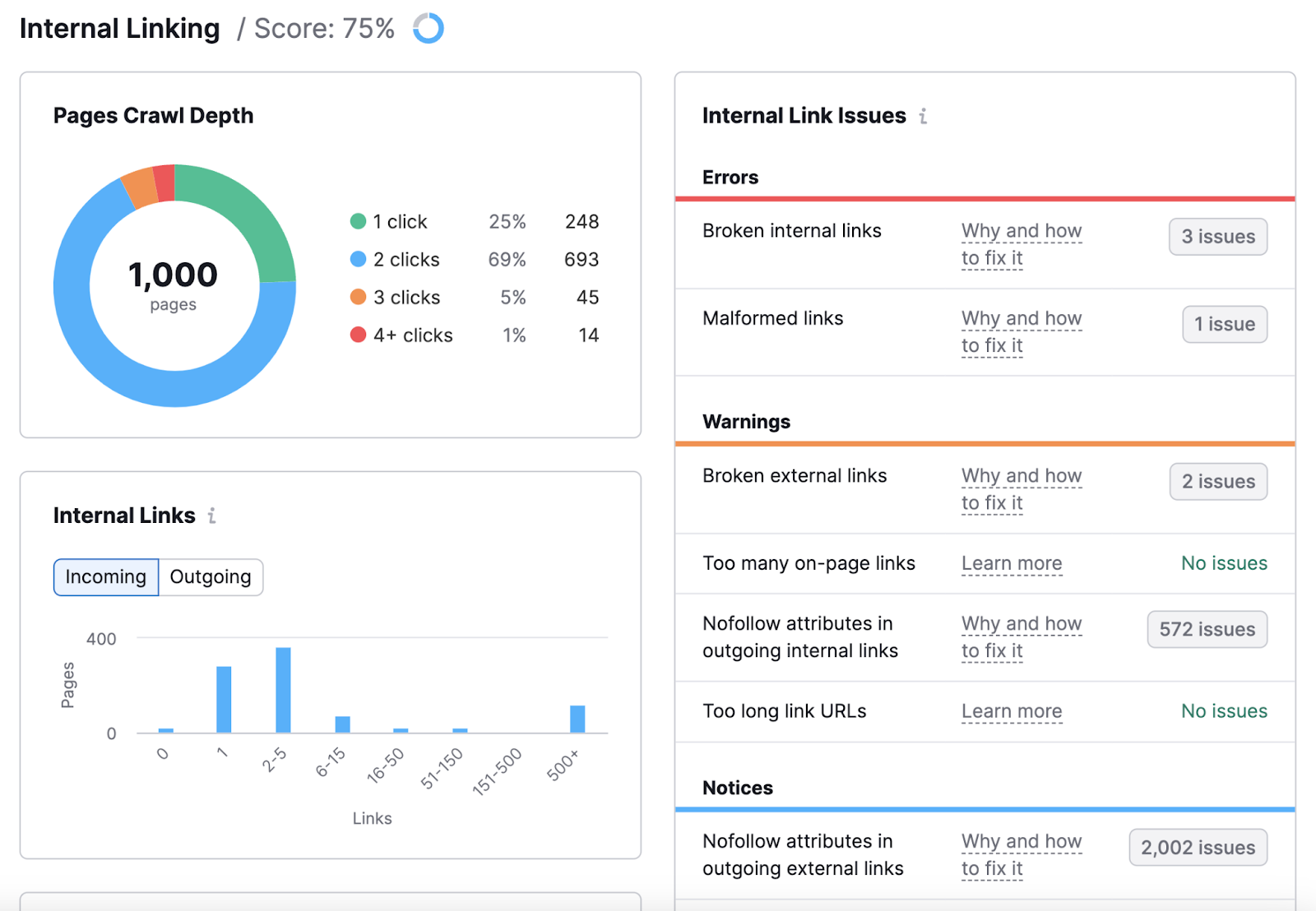
Resolve any errors, warnings, and issues as soon as you can to avoid hurting your site’s navigation.
And follow these site structure best practices:
- Plan your site hierarchy before you build your site to create a clear and simple navigation menu
- Use a flat site architecture—meaning any page on your site should be reachable in four clicks or less
- Use internal links strategically help users and search engines discover more of your content
- Use breadcrumbs to help users find they way and easily explore your site
- Use HTML and XML sitemaps to show search engines and people how the pages on your site are connected
Further reading: How to Build Your Website Architecture for SEO
14. Leverage CTAs Throughout Your Site
Calls to action (CTAs) are phrases that encourage visitors to take a specific action on your site.
For example, you can use a CTA to ask people to:
- Subscribe to your newsletter
- Download your ebook
- Sign up for a free trial
- Buy your product or service
- Share your content on social media
- Leave a comment or feedback
Like this:

CTAs are essential for improving your engagement metrics, such as time on page, bounce rate, and conversion rate.
They can also help you get more conversions, leads, and revenue—the ultimate goals of most any SEO strategy.
Here are a few best practices for using CTAs on your site:
- Use clear and compelling language to tell your readers exactly what you want them to do and why
- Use contrast and white space to help your CTA stand out from the rest of your content and design
- Use urgency and scarcity by adding words like “now,” “today,” “limited time,” or “only # left”
- Test different variations of your CTA to see which one performs best
15. Build Topic Clusters
Topic clusters are groups of webpages that cover a broad topic and related subtopics. They help cover a broad subject in-depth and establish your authority to search engines and users.
A topic cluster consists of two main elements:
- A pillar page that covers the main topic and links to subtopic pages
- Cluster pages that cover specific subtopics related to the main topic and link back to the pillar page
Like this:
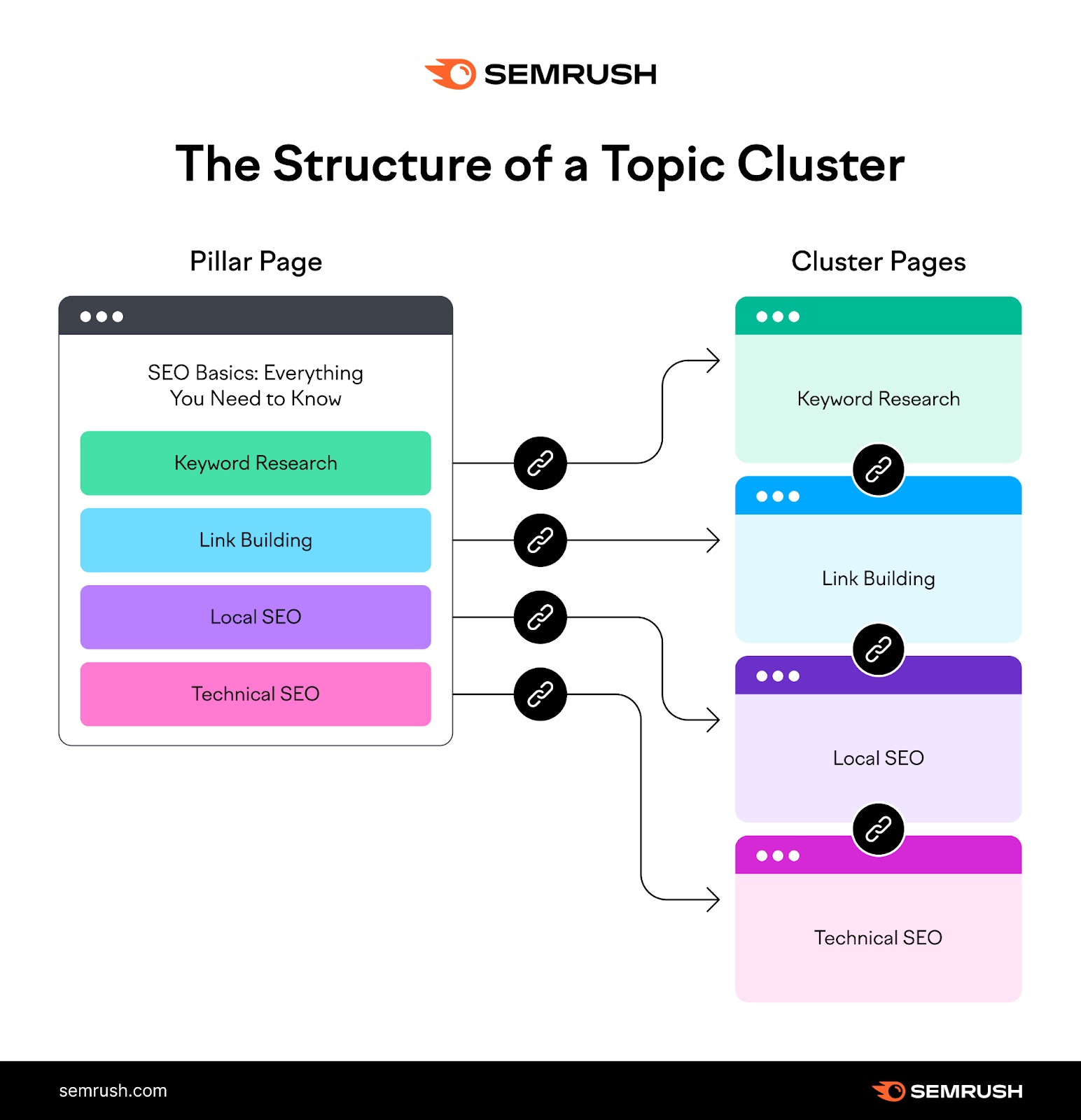
There are four main steps to creating topic clusters:
- Choose a core topic that’s relevant and important for your audience and your brand
- Perform keyword research to find subtopics and related keywords for cluster pages
- Create a pillar page that provides a broad overview of the core topic and links to cluster pages
- Create cluster pages that cover specific subtopics in depth and link back to the pillar page
You can start with the Topic Research tool.
Enter a topic, and the tool will create cards with related subtopics and ideas for your content.
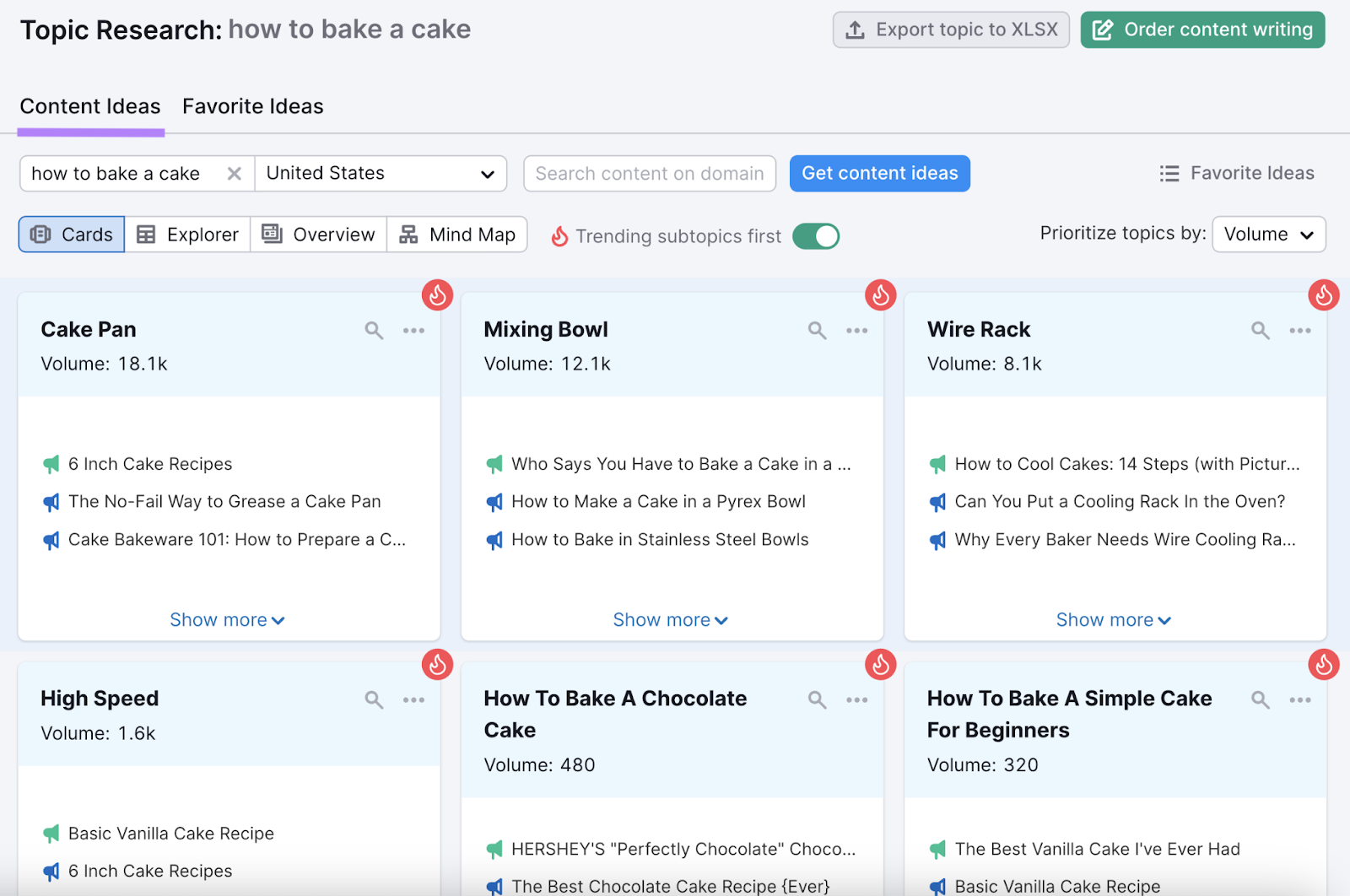
Further reading:
16. Add FAQs to Articles Based on People Also Ask Questions
The “People also ask” (PAA) section is a Google SERP feature that displays questions (and quick answers) related to a searcher’s initial query.
And can look like this:
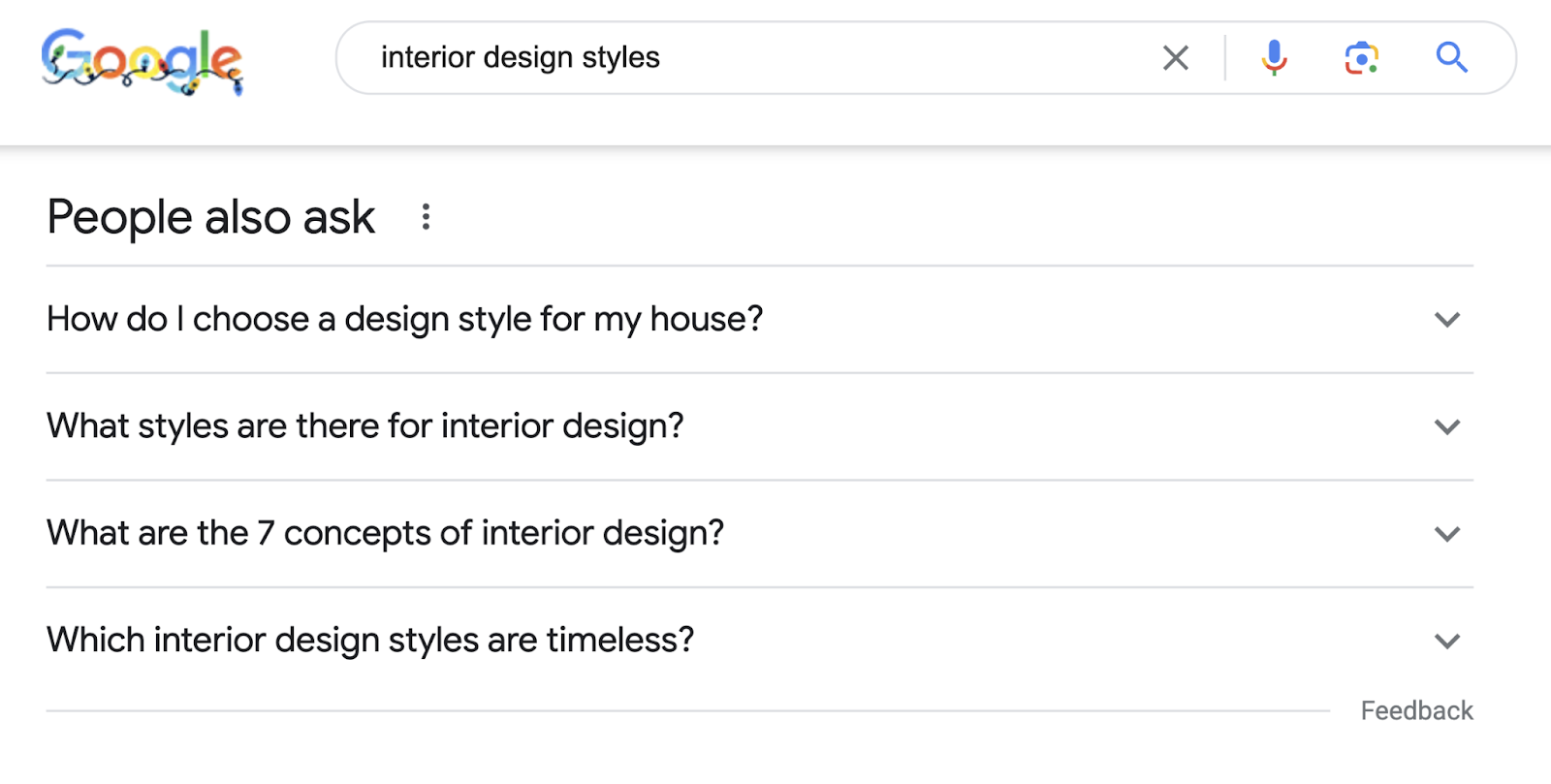
These questions are valuable because they’re:
- Questions people actually search for
- Relatively easy to rank for
- Only require a few sentences to answer
Which is why adding FAQs for PAA questions to articles is one of the best, most actionable SEO tips.
Start by doing a Google search for an article’s target keyword and browse for the “People also ask” section.
For example, here it is for the keyword “what is a url slug.”
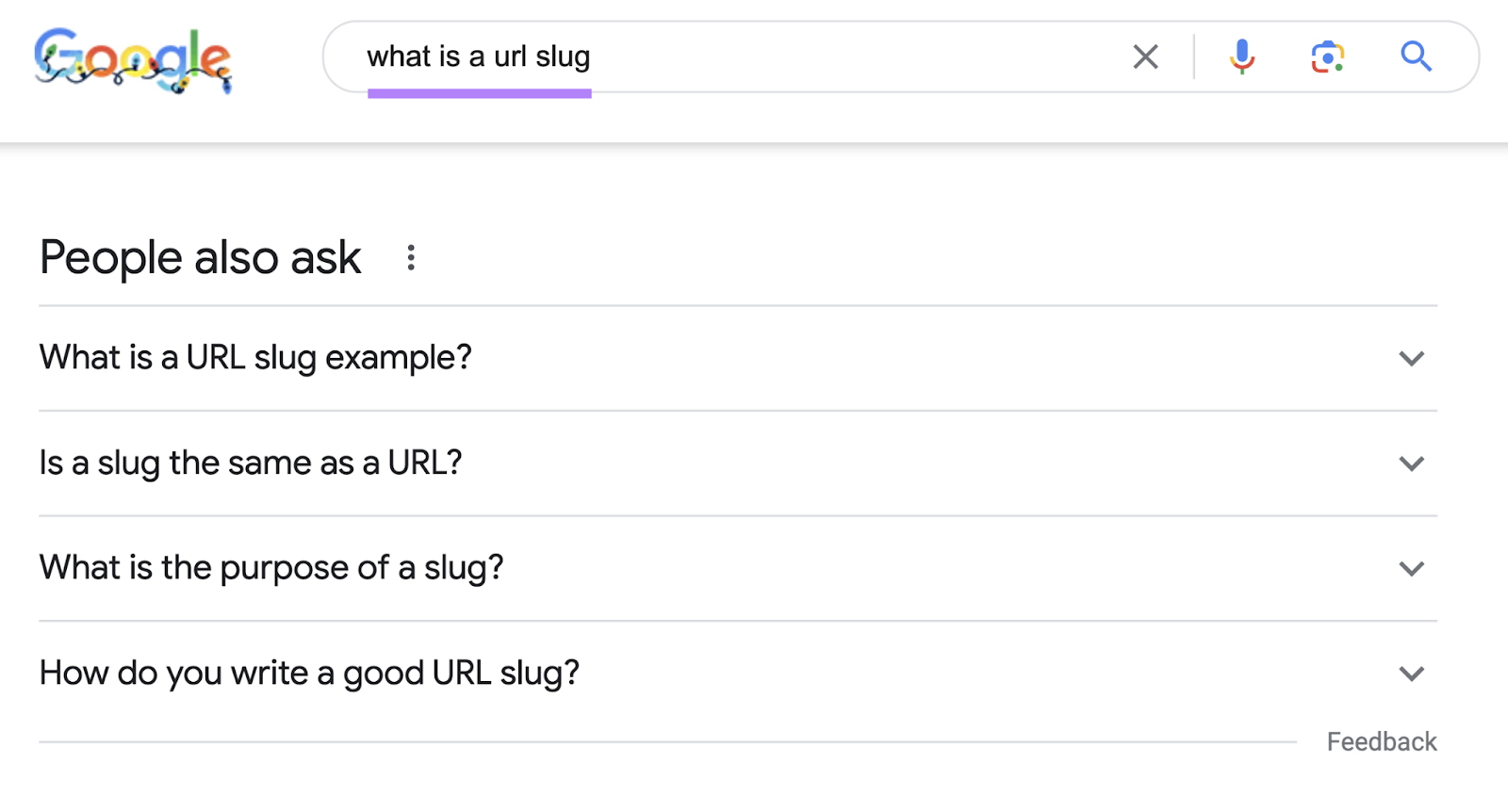
You can also plug your target keyword into the Keyword Magic Tool and select the “Questions” tab.
You’ll see a list of questions that contain your seed keyword.
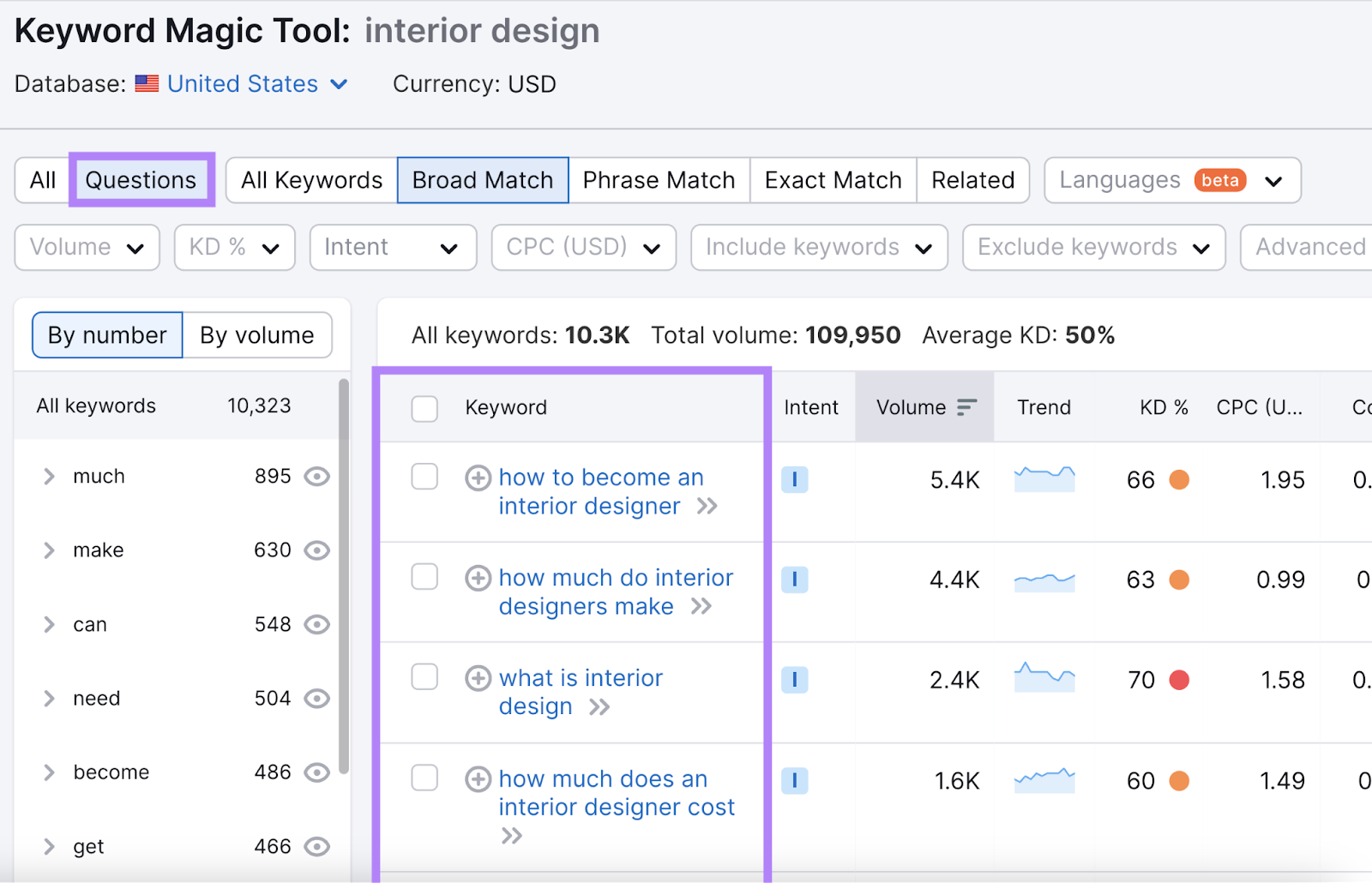
Then, analyze the questions and add any relevant ones to your article.
Each question should be an appropriate subheading (H2, H3, H4, etc.). And aim to answer each question directly and concisely with just a couple of sentences.
Like this:
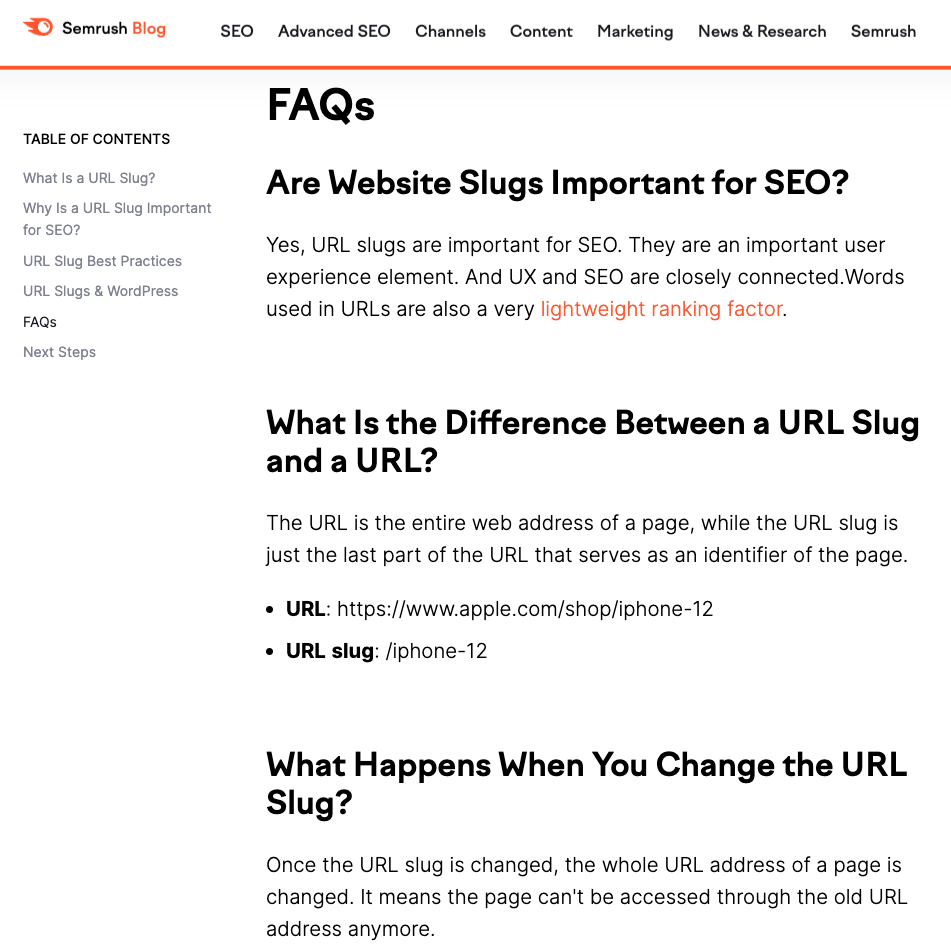
Thoughtfully adding FAQs like these to your articles can help you bring in more traffic and potential customers.
17. Find What People in Your Niche Link to
One of the best ways to earn backlinks naturally is to create linkable assets.
Linkable assets are high-quality pieces of content that attract links from other sites—like infographics, in-depth guides, original research, videos, etc.
Basically, a resource so great people can’t help but link to it.
Think about it:
Why do people link to anything?
Because it’s useful, interesting, entertaining, or valuable in some way. And that’s exactly what a linkable asset is.
But here’s the catch:
You can’t just create any piece of content and expect it to get links. You need to create something that’s proven to work in your niche.
How?
By finding out what people are already linking to.
That way, you can create something similar (or even better).
Here’s how:
Open Backlink Analytics, enter a competitor’s domain, and click “Analyze.”
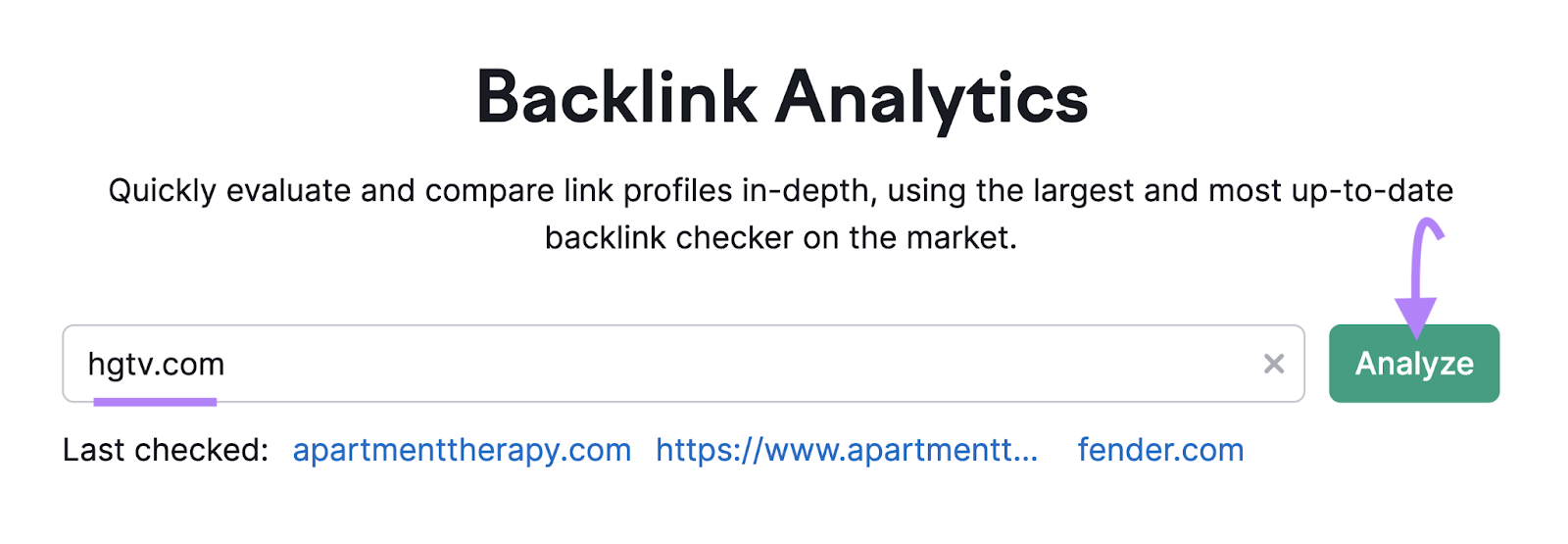
Then, go to the “Indexed Pages” tab to see which of their pages have the most backlinks.
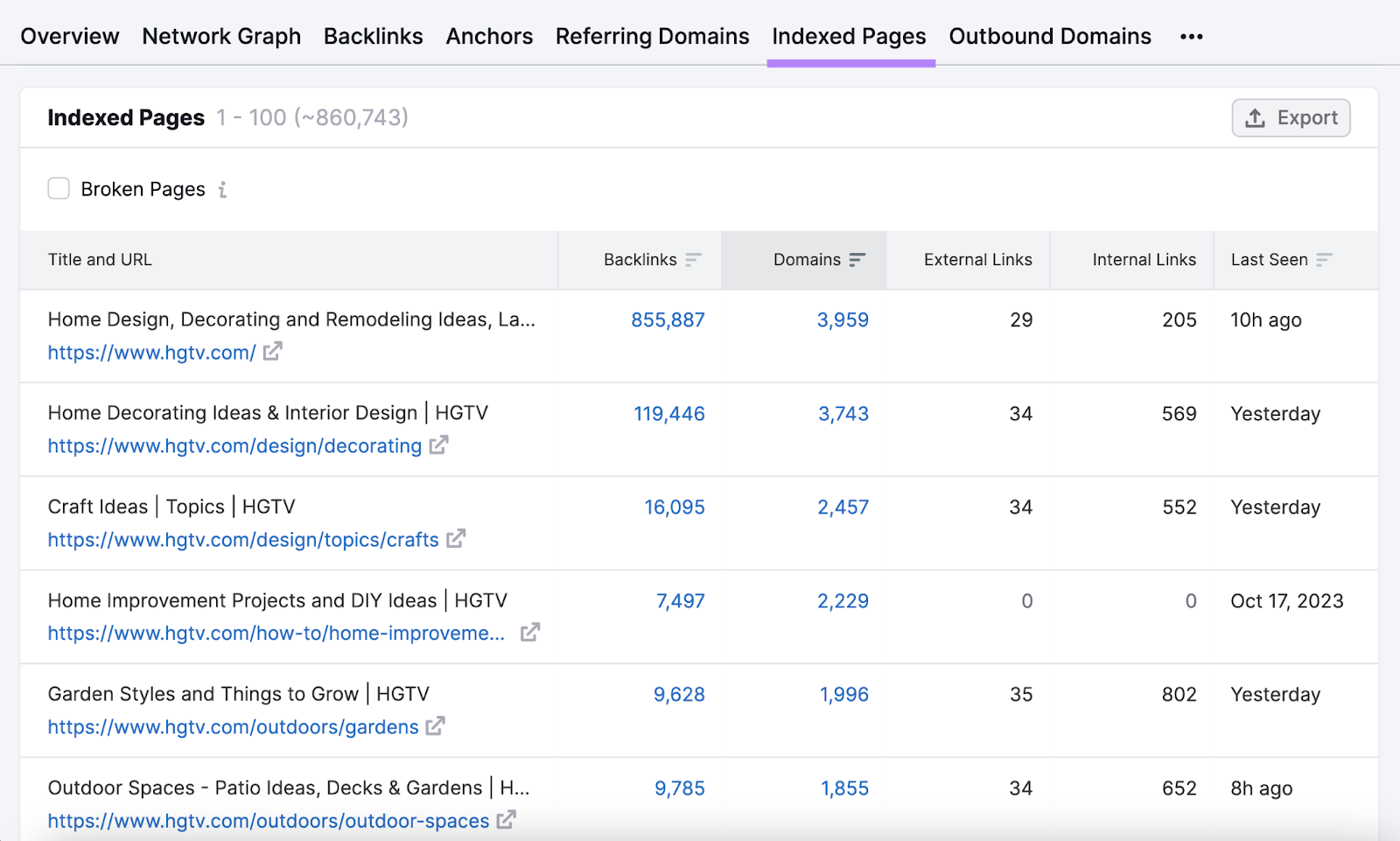
Browse the pages. Repeat the same process for your top organic competitors. And look for patterns.
For example:
- Is the content mostly short-form or long-form?
- Are they mostly in-depth studies, ebooks, or something different?
- Do they use lots of visual assets?
The answers to these questions should guide your strategy. So you can replicate what’s already working in a better way.
Further reading: Link Building Strategies: 8 Ways to Build Links
18. Uncover and Remove Zombie Pages
You probably have pages on your site that get little to no traffic. They may be indexed by search engines, but they fail to attract views from real visitors.
These are called “zombie pages.” And they’re hurting your SEO.
Why?
Because zombie pages waste crawl budget, dilute authority, confuse site structure, and hurt the user experience.
In other words, they’re dead weight.
Some common examples include:
- Pages with technical issues (like slow loading speed, broken scripts, or crawl errors)
- Pages that aren’t mobile-friendly or user-friendly
- Pages with outdated, irrelevant, duplicate, or thin content
- Pages that aren’t optimized for search engines (e.g., missing titles, meta descriptions, headings, etc.)
- Pages that have no internal links pointing to them (orphan pages)
You can easily find these pages in Google Analytics.
Go to “Reports” > “Life cycle” > “Engagement” > “Pages and screens.”
Then, look for pages with low or no traffic, engagement, or conversions. (You can sort each of the corresponding columns in the table to show the lowest metrics by clicking the arrow that appears when you hover over the column label.)
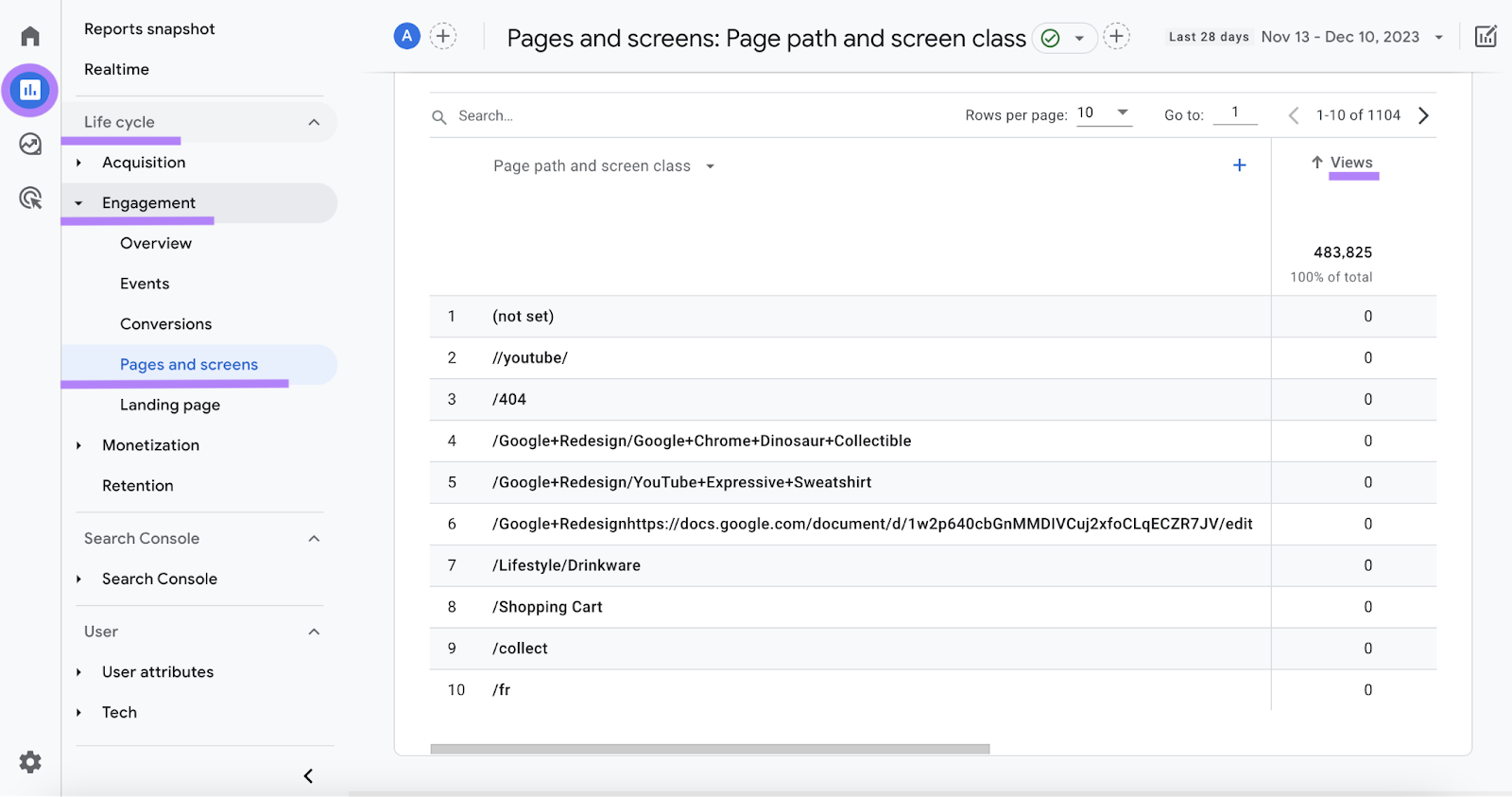
Once you have a list of zombie pages, it’s time to remove them. You have two options:
- Remove them permanently (and redirect them to a related page)
- Update them with fresh, relevant, and high-quality content
Further reading: Combating Thin Content: How to Identify and Fix It
19. Locate, Optimize, and Update Old Content
One of the easiest ways to improve your SEO is to locate, optimize, and refresh your old content.
Why?
Because old content is low-hanging fruit.
You already have it on your site. It’s already driven some traffic, backlinks, and authority. And you already have some data and feedback on how it performs.
All you need to do is make it better with a few simple tweaks.
How?
You can quickly find low-performing content with On Page SEO Checker.
The tool shows optimization ideas you can implement. And an estimate of how much traffic those ideas could help you gain.
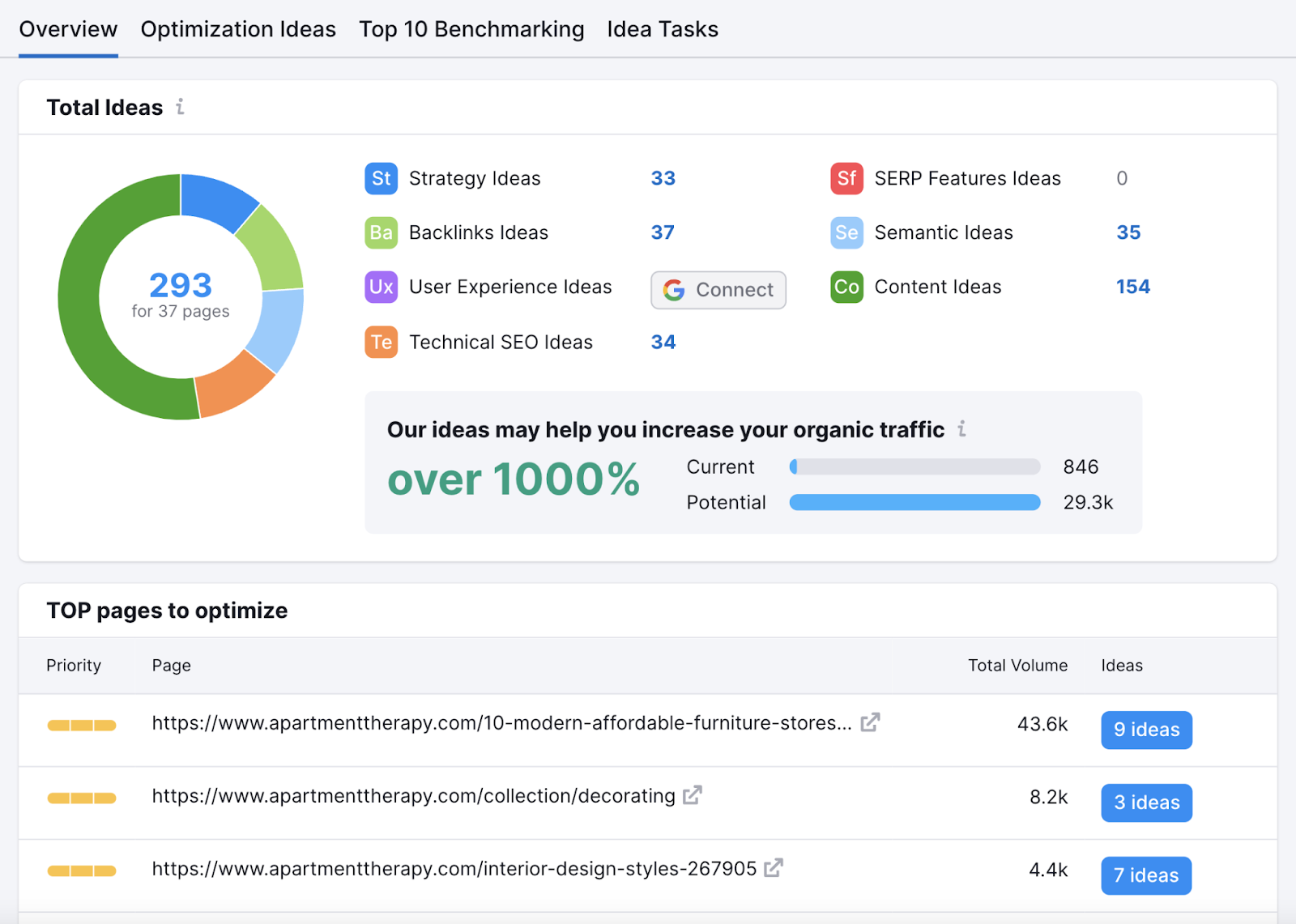
You’ll also get a table with the pages you should optimize first. Prioritize these, as they’ll be the most impactful.
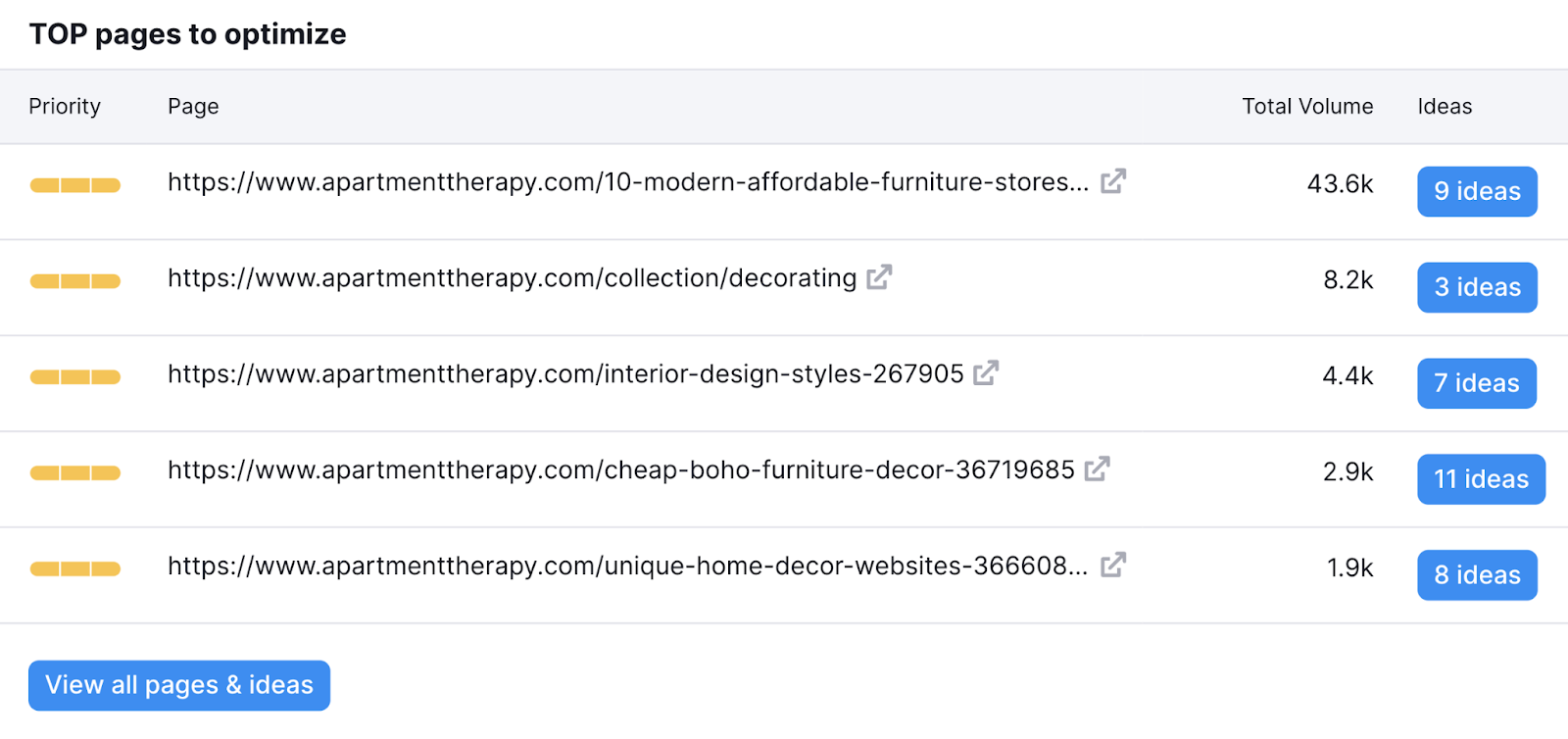
Click on the blue button with the number of ideas to see more details.
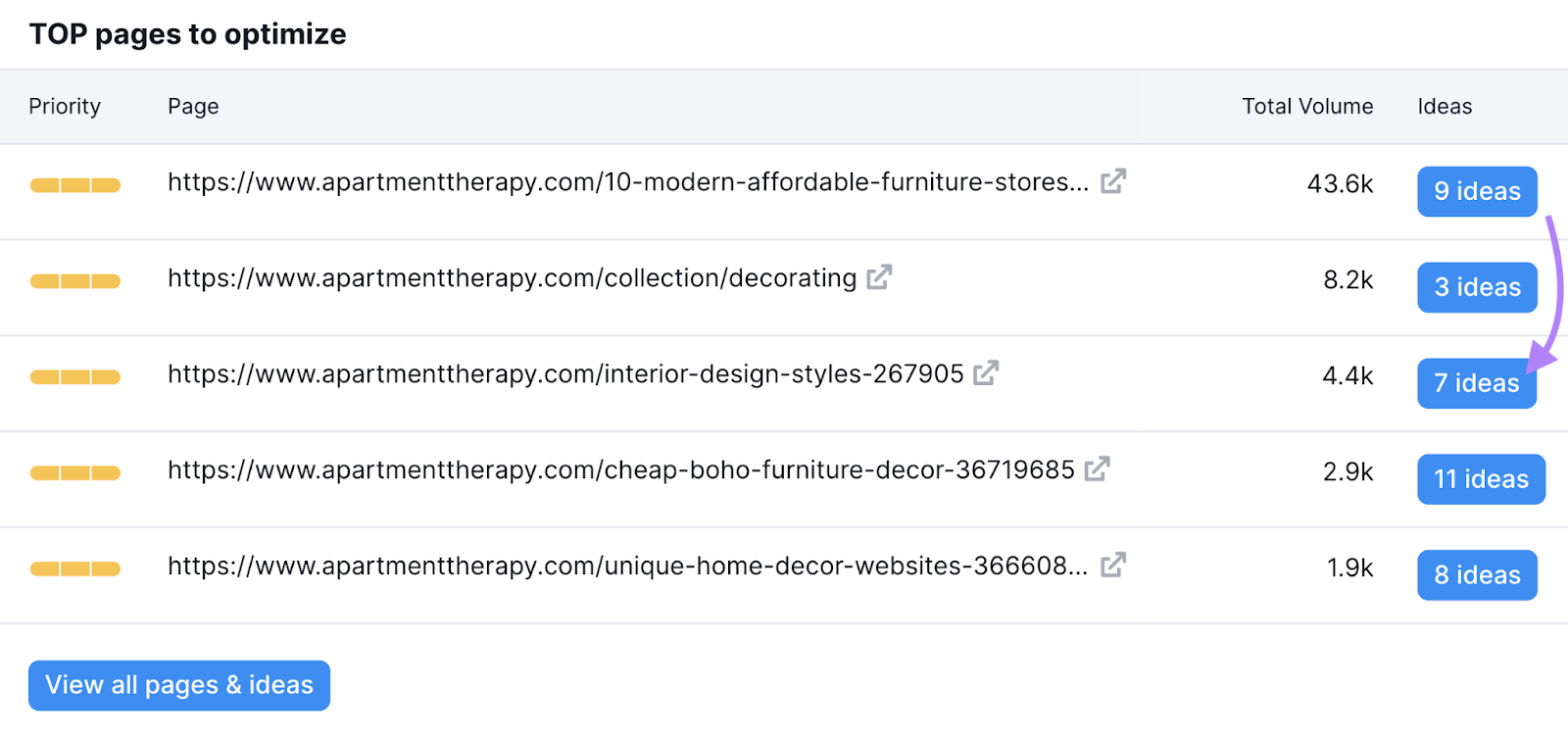
You’ll see the different ideas for that page, sorted by category. And more information about how to fix them and why.
Like this:
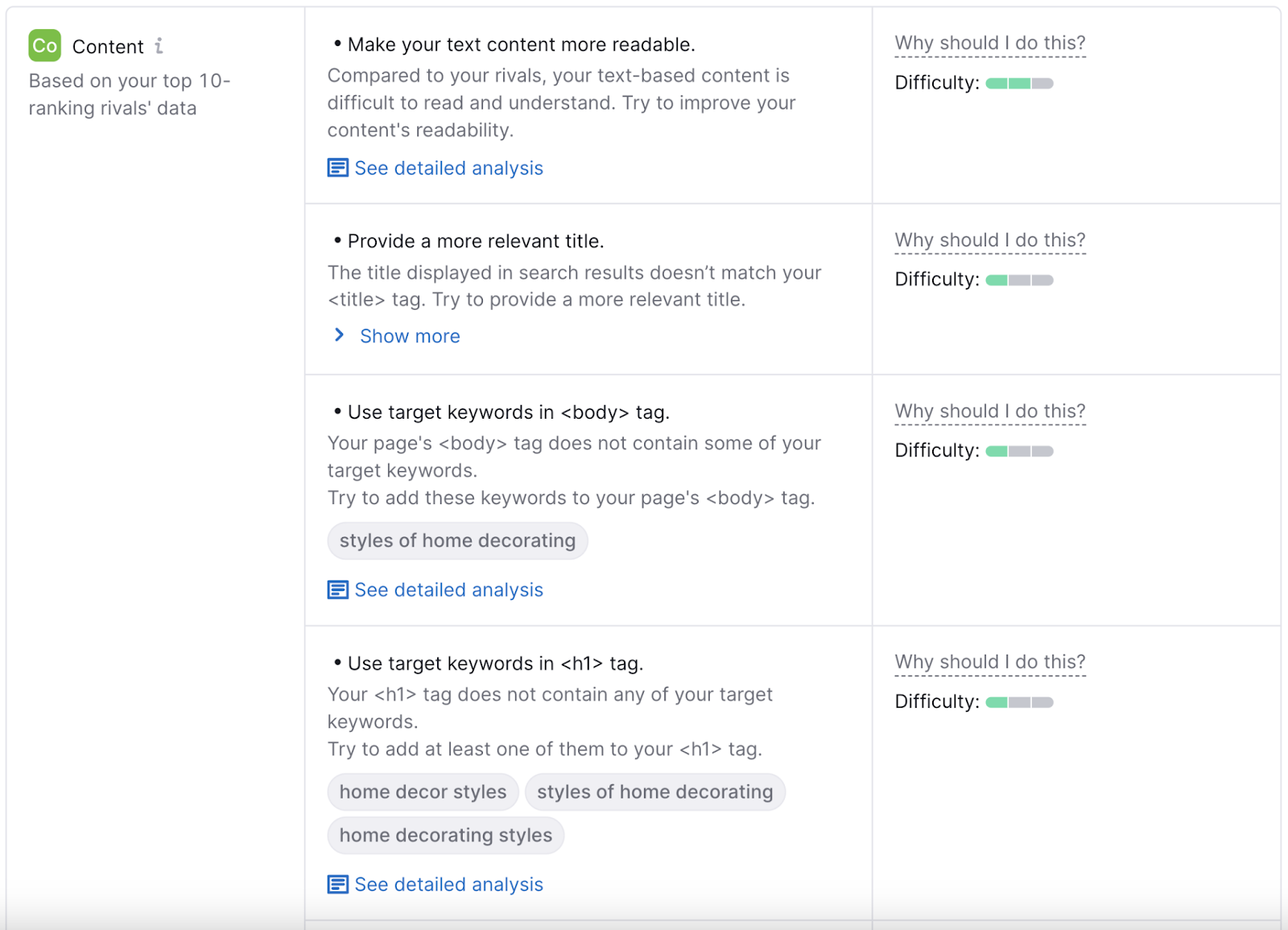
Further reading: On-Page SEO: What It Is and How to Do It
20. Demonstrate E-E-A-T
Although they’re not direct ranking factors, Experience, Expertise, Authoritativeness, and Trustworthiness (E-E-A-T) are a very big deal for SEO.
Why?
Because Google wants to rank content that’s high-quality and credible.
Especially for topics that affect people’s health, happiness, safety, or finances.
So, how do you incorporate E-E-A-T into your content?
Here are a few best practices:
- Add author bios for every piece of content, highlighting the authors’ experience, expertise, and credentials
- Link to reputable and reliable sources that back up your claims, arguments, and data
- Add links from your site to your social media accounts, credentials, awards, or certifications that show your expertise and authority
- Link to other relevant and high-quality content that helps show your breadth and depth of knowledge on the topic
Showing off E-E-A-T is one of the most important SEO recommendations.
You can boost your rankings, traffic, and conversions. And establish yourself as a trusted and authoritative source.
Further reading: What Are E-E-A-T and YMYL in SEO & How to Optimize for Them
Execute on These Top SEO Tips
SEO is broad and constantly changing. Which means it’s very difficult to include every tip in one piece of content.
But if you implement the SEO advice above, you’ll be that much closer to boosting rankings and traffic. And one step ahead of the competition.
To execute on these tips, sign up for a free Semrush account.
You’ll be able to:
- Do keyword research
- Run a competitor analysis
- Conduct a technical SEO audit
- Track keyword rankings
- Get ideas for on-page SEO improvements
And lots more.
Source link : Semrush.com
